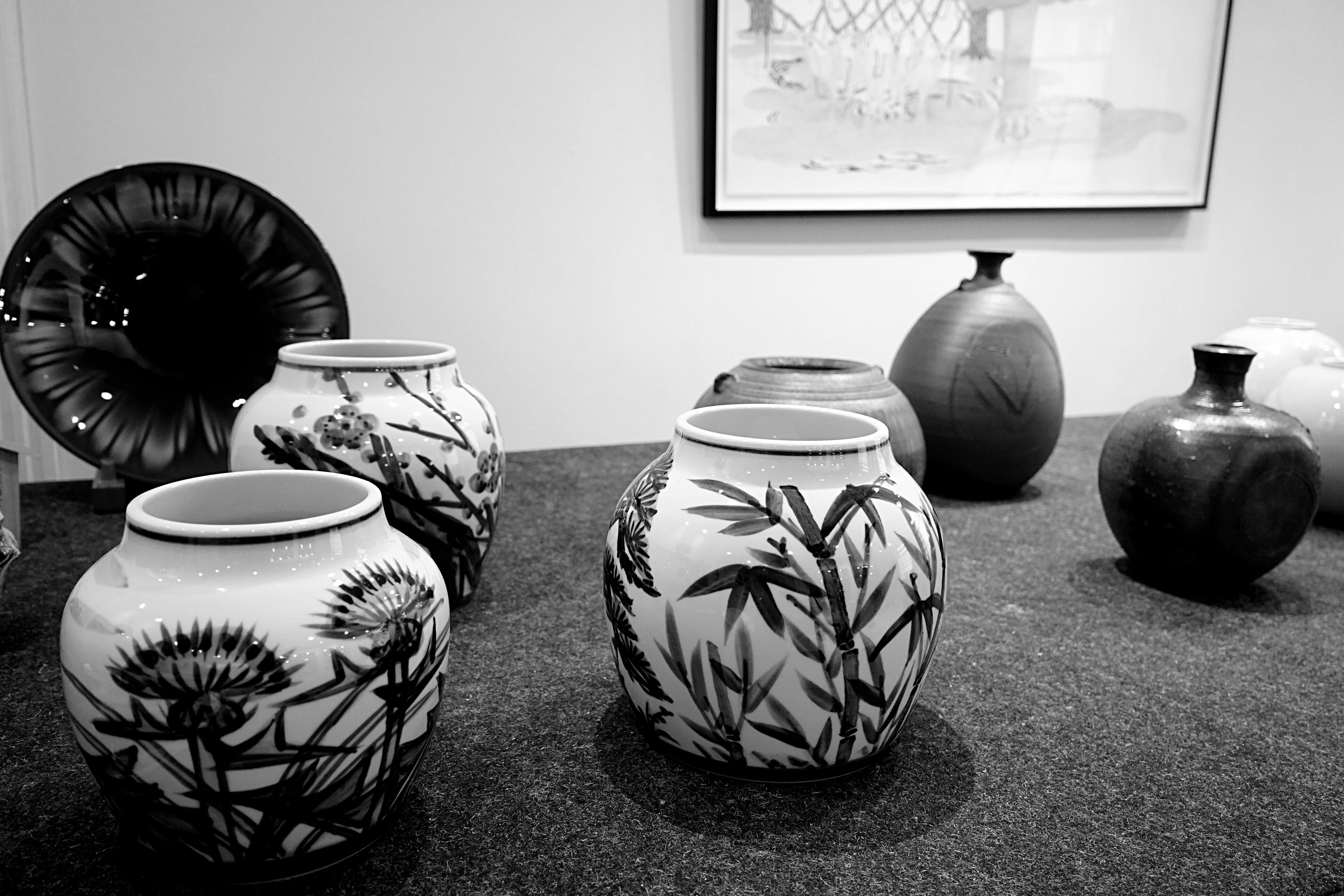




GrowingupinIzumo,MiharaKenisinspiredbythebeautyofthevastnatural landscape Heusesaniron-ladenclayandhigh-firedtemperaturestocreate beautifullytexturedpiecesthatmimicthesoftlyaged,gradatingsurfacesofnatural stone.Hispiecesareunglazedandmulti-fried.Seriousandmeditative,hisceramics contemplateshapesinspiredbycraftformsoutsideofceramicssuchas lacquerware,papercrafts,bronzes,andancienttraditions.Theshapeofthisvessel callstomindearlybronzewarewithintegrityandmight Itprojectssuchaquiet grandeur;oneviewsitwithawe Thepieceisarchitecturallybuiltwithmultiple firings,sothattheashoverflowsnaturallyontheobject.Allthelinesonthisobjectis simpleandstraight,thetiltedbottom.MiharaKenisadecoratedceramicist,with acquisitionsinover40leadinginstitutionssuchastheMetropolitanMuseumandthe Victoria&AlbertMuseum

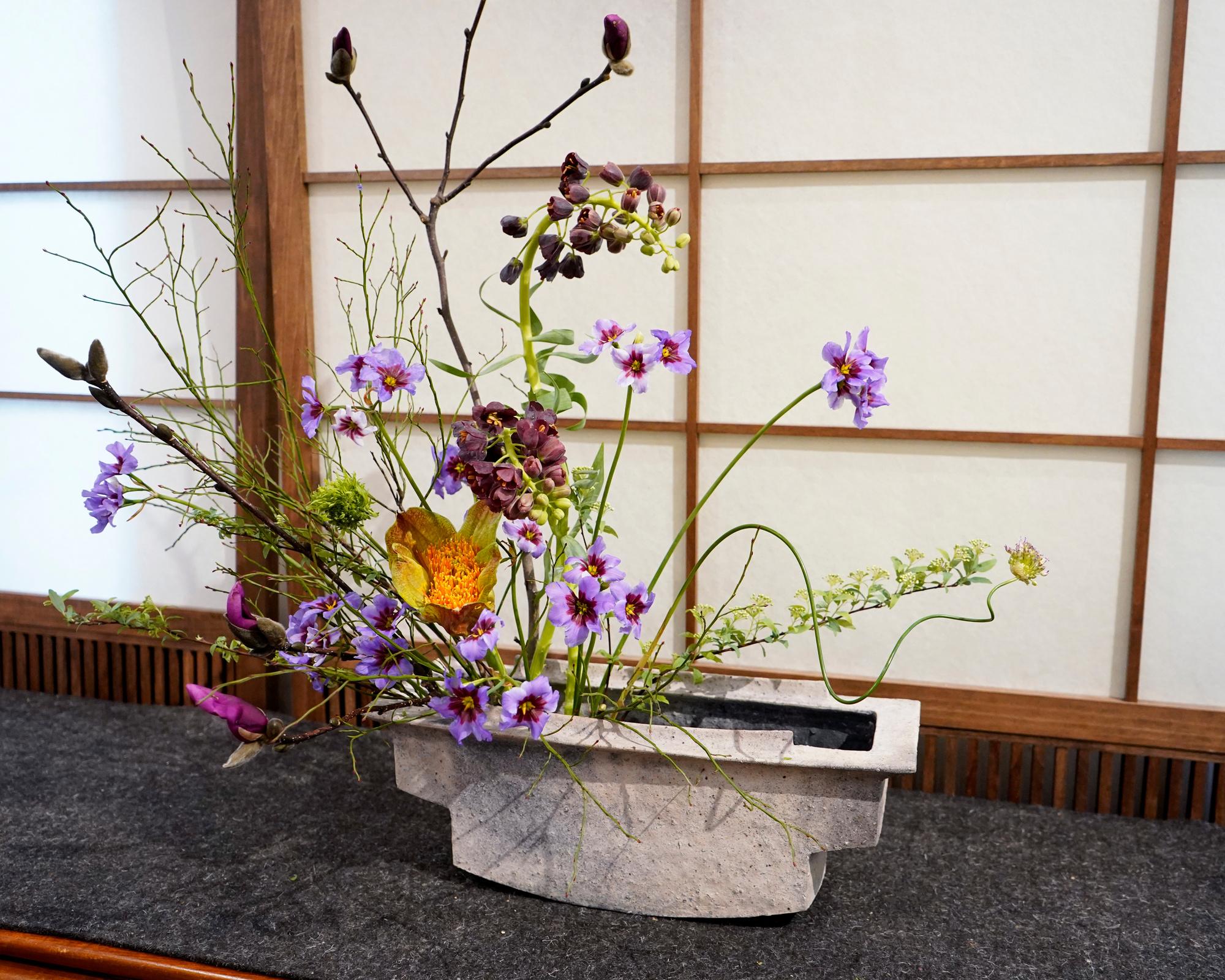
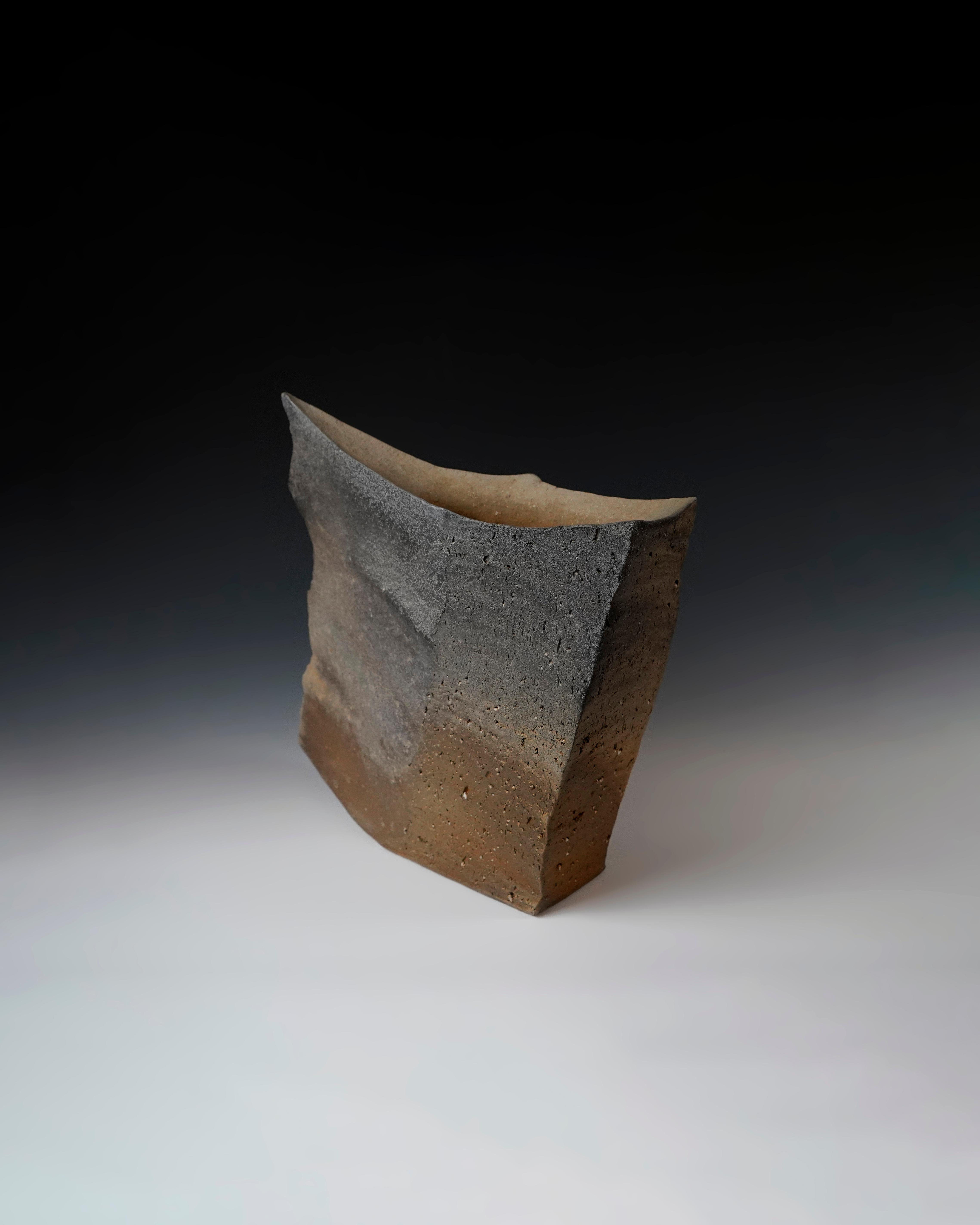
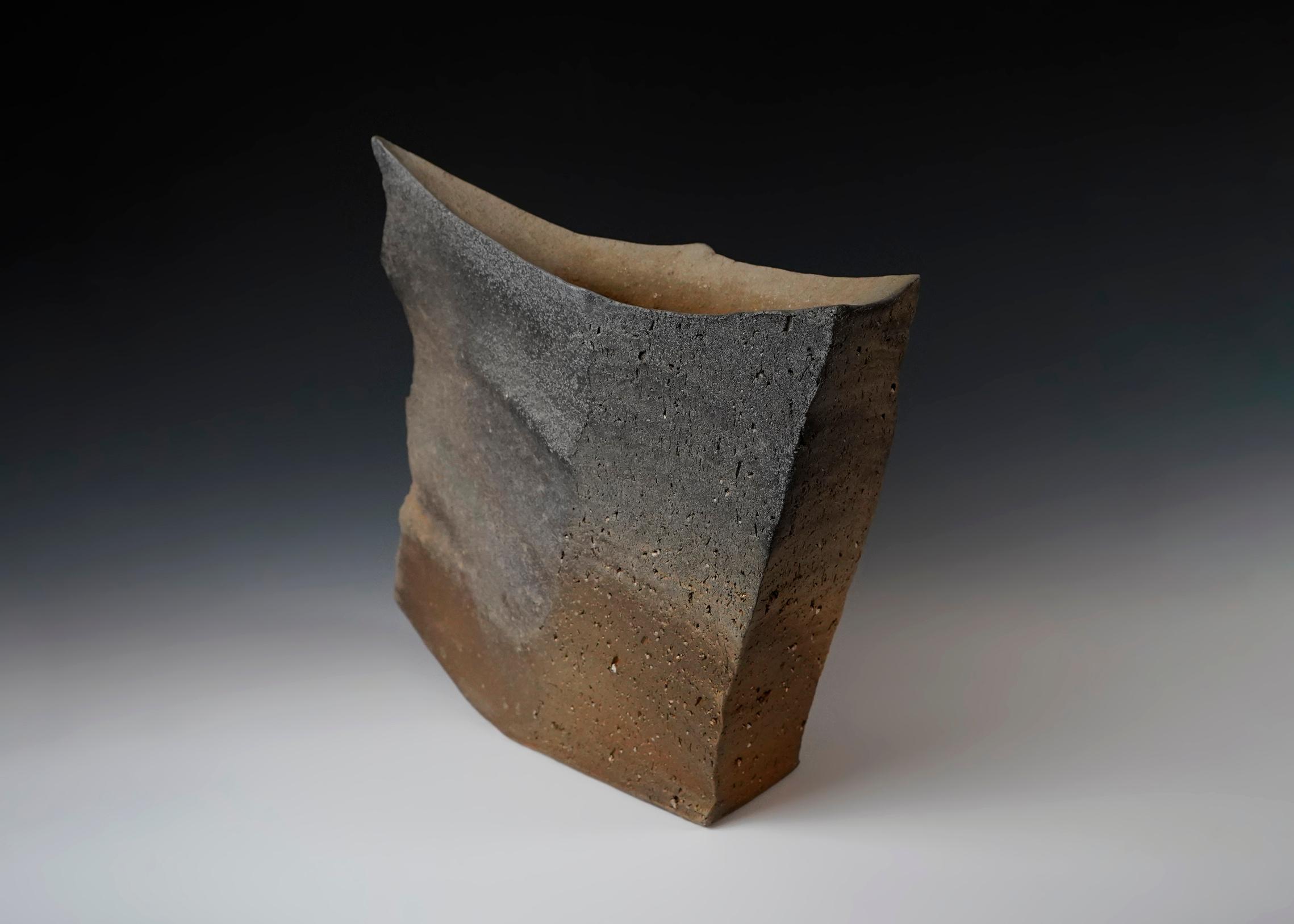
Inadditiontoitsforcefulform,thenaturalshigarakisurfaceonthisvaseissensitiveandsubtle The coolandwarmhuesgraduatefromonetoanother,creatingasymphonyofalternatingtones Not onlythat,buttheartisthasutilizedafacetedsurfaceinordertocapturethesubduedsideof Shigarakiindifferentlights.Ifseeninnaturallight,thepiecetakesonadifferentlookatvarioustimes oftheday Itdemandsslow-lookingfromthebeholder
Koyamawasbornin1936,andinhislifetime,hehasbeenaforerunnerofrevivingtheartofshigaraki, bringingitintothestageofcontemporarycraft Hispioneeringspiritcomesthroughinallstagesof hiscraft.Hewasthefirstpottertoconstructamodernanagama(tunnel“cave”kiln)forhisashglazedandunglazedsurfaces,revivingmedievalceramictechniquesimportedfromChinatoJapan duringtheTangdynastyviamaritimetrade Koyamahasagreatsenseforsurfacetextureandits relationshiptoform,asdemonstratedinthisvase;Histalenthasearnedhimwidespreadpraiseand anillustriouscareerspanningover3decadesofsoloexhibitions Hisworksareheldinthepermanent exhibitionsoftheMetropolitanMuseumofArt,theBrooklynMuseumofArt,theClevelandMuseum ofArt,theStedelijkMuseum,andmore.

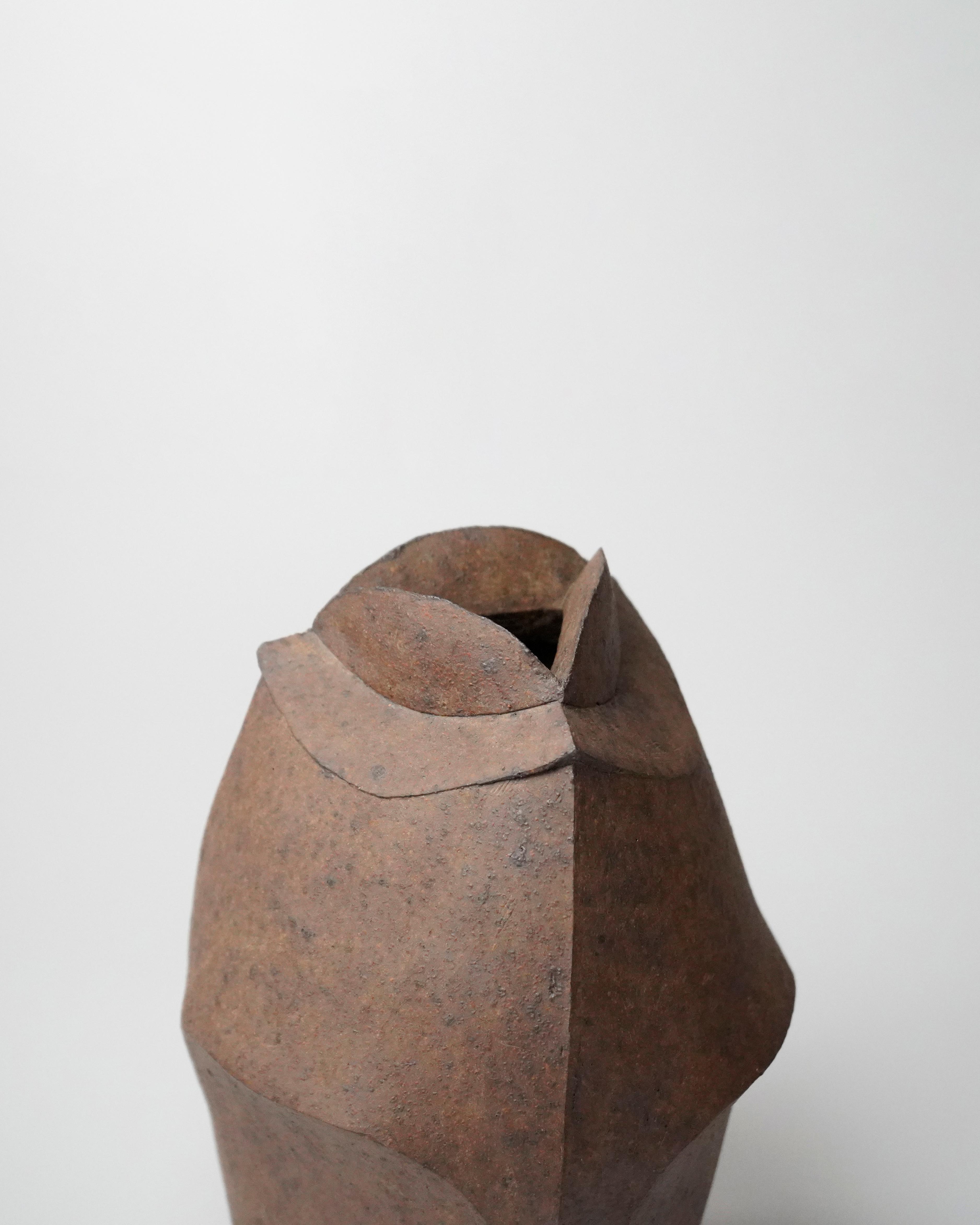
AleadingpotteroftraditionalBizenfiringtechniques,MoriTogaku森 陶岳(b.1937)has epitomizedwood-firingtechniqueswiththelargeMomoyama-inspiredclimbingkilnsthathe hasbuilt.Notonlyhavehisspiritualinclinationsinfluencedhisworks,buthisworksarealso historicallyinformed HiskilnsaremadeusingMuromachi-inspiredfiringtechniques,and heavilyinspiredbyChineseSuewareforms HisreintroductionoftheOgamatomodernand contemporarypotteryhasrevivedtheBizencraft
Formisdevelopedinpreferencetosurfaceeffects:Thisexquisitejarshowsthediversetalent ofthisBizengiant.Thejar'sopeningisbeautifullyadornedwithBizenGoma(aneffectfrom firingthatcreatesatextureresemblingsesameseedsscatteredonasurface)ononeside.The geometricandpatterningwrapsthiscylindricalvase,givingacontemporaryfeeltothis ancientobject

Object metadata: MORI Togaku 森 陶岳 (b. 1937)
A Black Stoneware Rectangular Jar 黒瓷 扁壺, 1990 With Signed Wood Box Stoneware H11.5" X W8.4" X D8" H29.2 x W21.3 x D20.3 cm

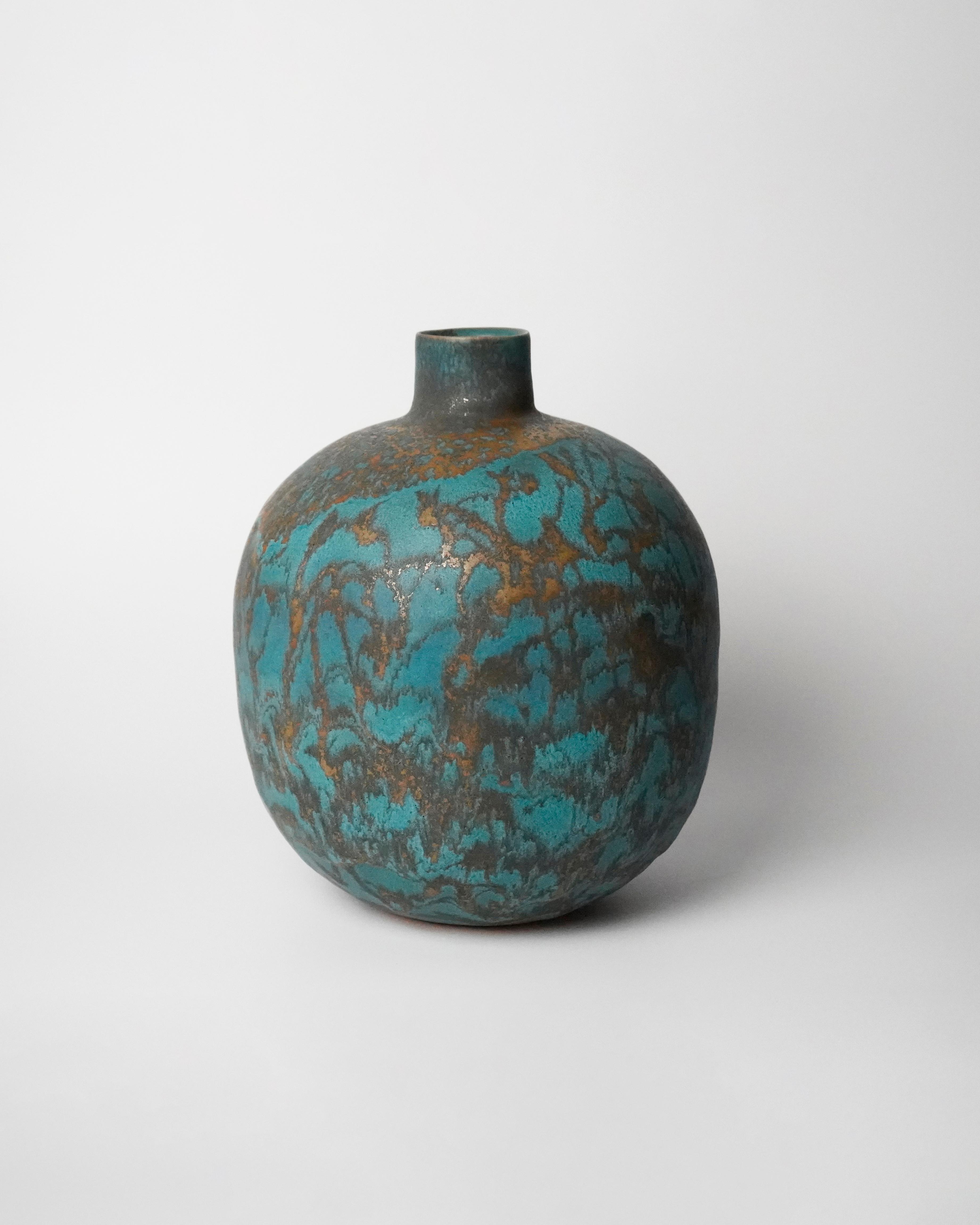

MorinoTaimeihopesthatviewersreadbetweenthelineandshapethatplayfullystretch acrossthesurfaceasonewouldreadapieceofliteratureorpoetry,andthereforecometo betterunderstandhisworkanditsconnectiontoma(theideaofexistingduringanintervalor emptinessinspace).
Morino'sworkisfirmlyrootedinthetraditionsofhisnativeKyoto,yethisexposureto internationalarttrendsduringthefouryearshespentteachingattheUniversityofChicagoin the1960sandhisawarenessofmoreavant-gardeJapanesepracticesbothaffectedhiswork Morino'sworkcontinuestocombinetraditionandinnovationwhileexpressinghisdedication tothedeeplycomplexconceptof"ma",or"negativespace" Object

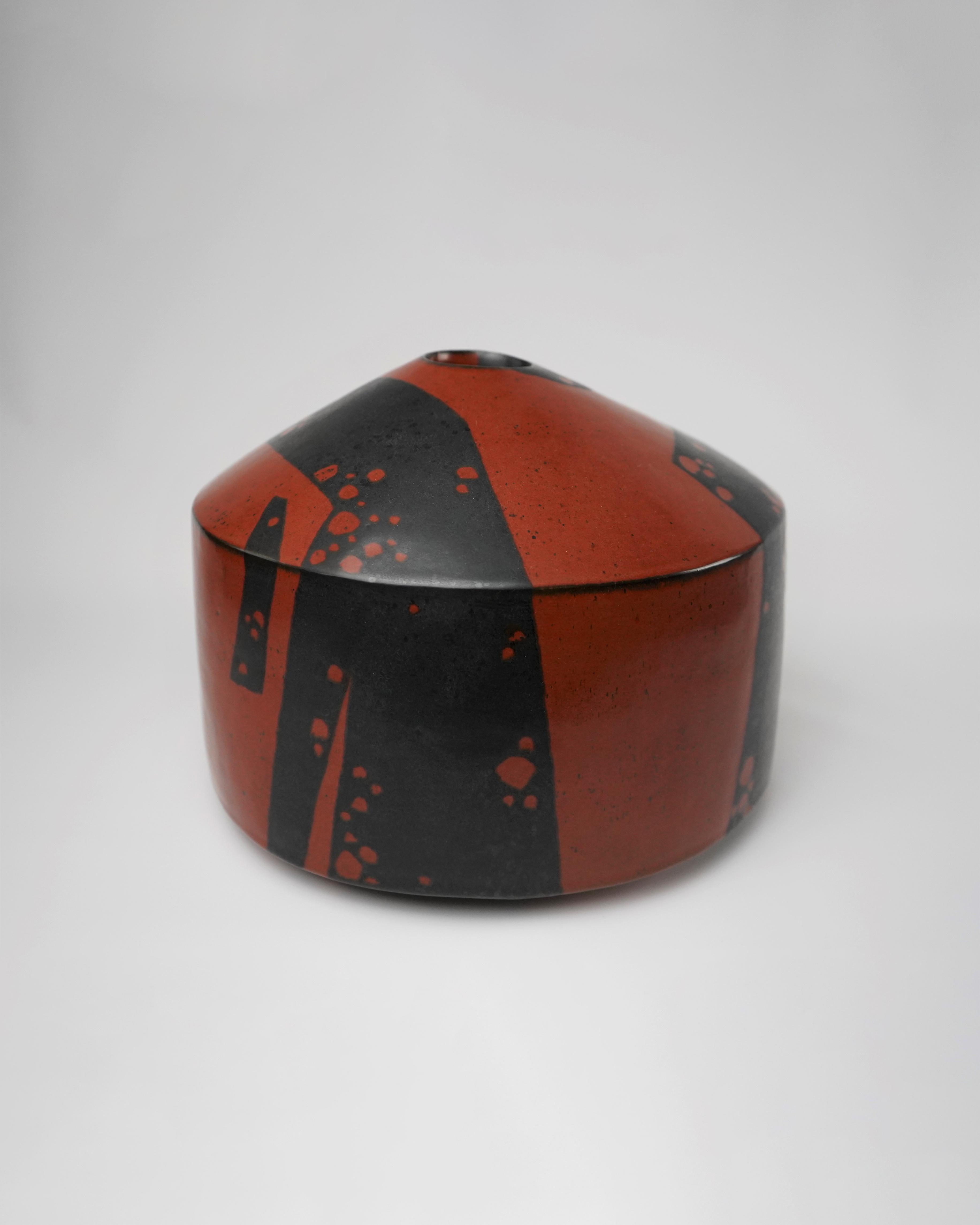
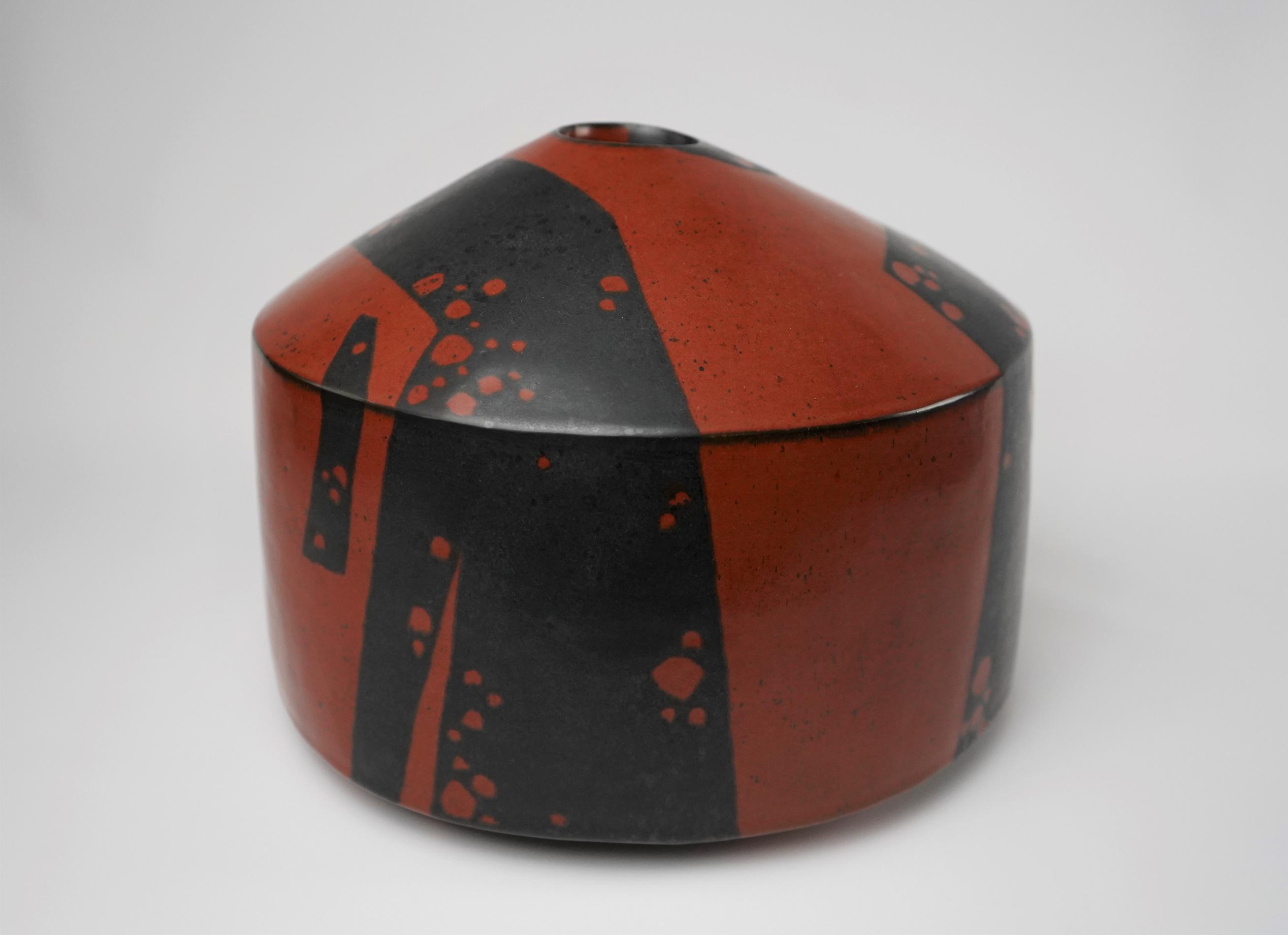
MorinoTaimeihopesthatviewersreadbetweenthelineandshapethatplayfullystretch acrossthesurfaceasonewouldreadapieceofliteratureorpoetry,andthereforecometo betterunderstandhisworkanditsconnectiontoma(theideaofexistingduringanintervalor emptinessinspace)
Morino'sworkisfirmlyrootedinthetraditionsofhisnativeKyoto,yethisexposureto internationalarttrendsduringthefouryearshespentteachingattheUniversityofChicagoin the1960sandhisawarenessofmoreavant-gardeJapanesepracticesbothaffectedhiswork. Thispieceechoesthepatternsonhisblackandredglazesreminiscentoftraditionaliron worksonlacquerboxesandcheststherebytranslatingthattraditionintoanewmedium. Morino'sworkcontinuestocombinetraditionandinnovationwhileexpressinghisdedication tothedeeplycomplexconceptof"ma",or"negativespace"


TheelegantceladonporcelainworksbyKawaseShinobuoriginatedintheartist’sgreatlove anddeepappreciationfortraditionalChineseceladon.Hehasspentnumeroushoursinthe galleriesofTaiwan’sNationalMuseum,tryingtosoakinthelessonsofcenturiesofceramic tradition
Overhisyearsofresearch,KawaserealizedthatmuchofthebeautyandgraceofChinese celadonceramicscomesfromtheiruseoforganicforms Thesenaturalformsfoundtheirway intoKawase’swork.Inthisvase,thesilhouetteofapenguin'spuffedchestiscapturedinthe form.Thecurvatureofthevaseisbisected,recallingthepointofapetal.Theclaybodyis skillfullythrown,perfectlyglazed.Thequalityofceladonglazeachievedbytheartistis unmatchedinitspurity,aformalachievementthatmirrorshistranquilsubjects
Object metadata: KAWASE Shinobu 川瀬 忍 (b. 1950)
Celadon Jar “Jin-cho (Penguin)”⼈⿃, 1996
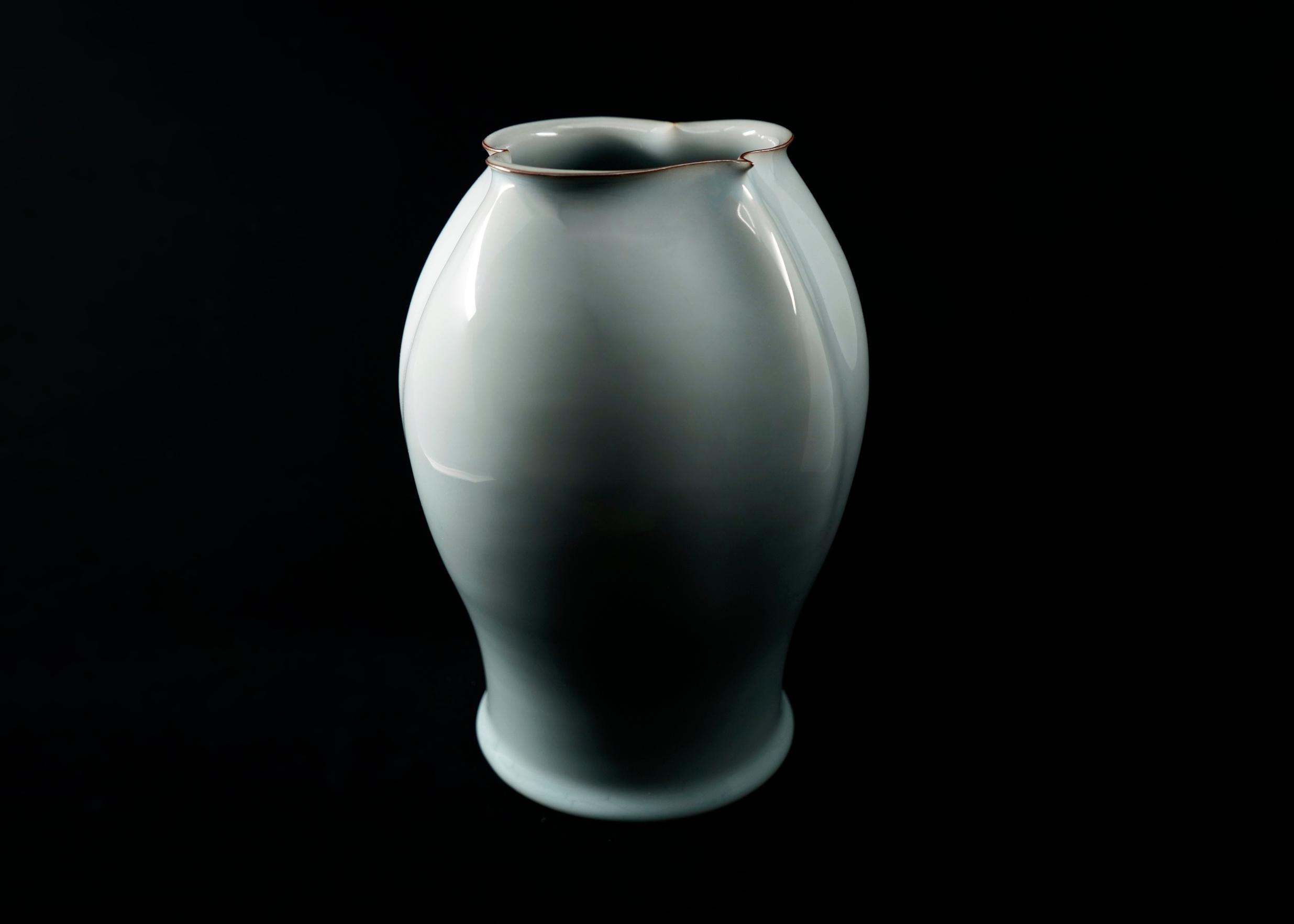
With signed wood box
Celadon glazed stoneware
H8.6” x D6.2” x W6.3”, H22 x D16 x W16.2cm

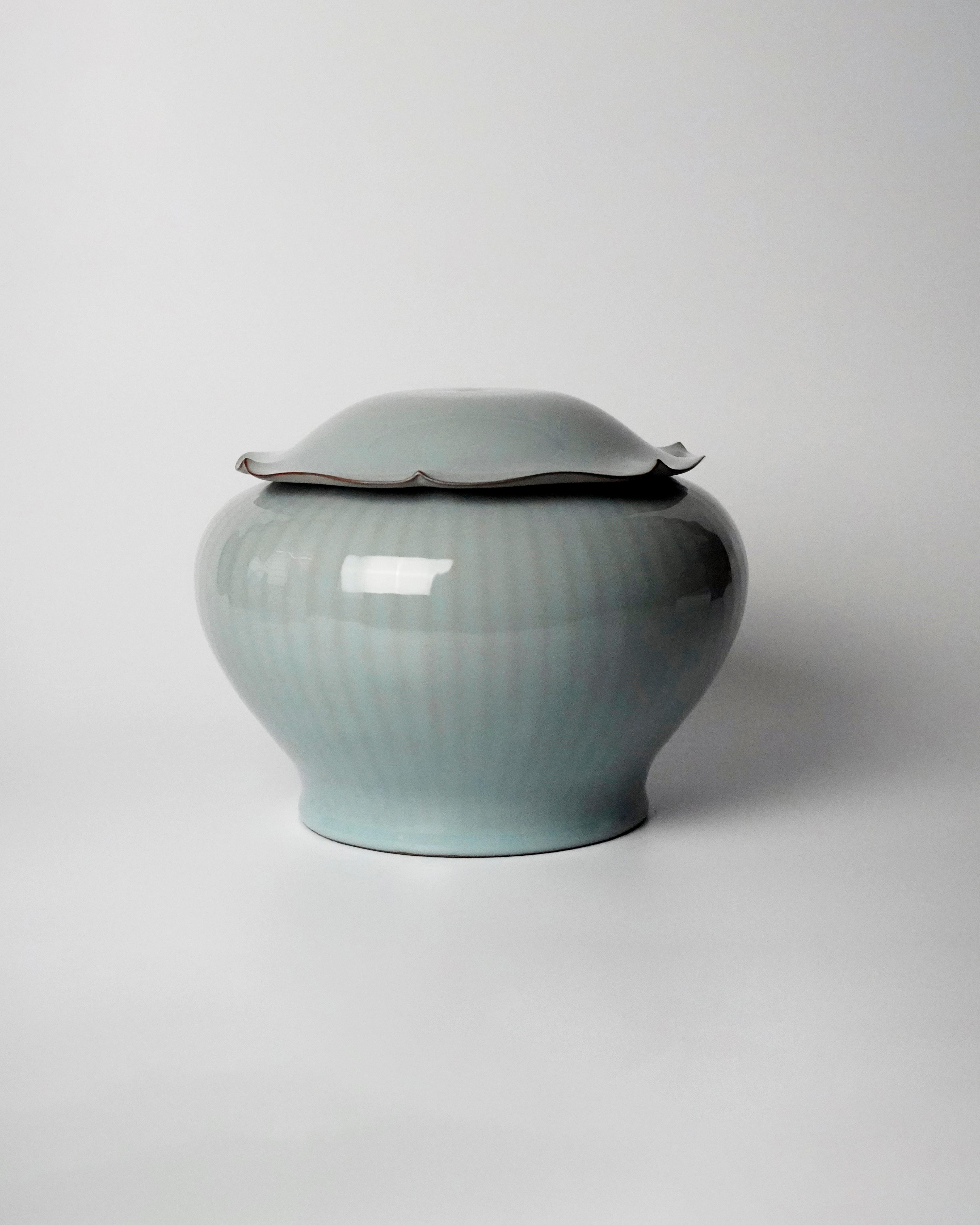
Descendedfromalonglineofceramicists,KawaseShinobu’sworksadheretotraditional ChineseSongdynastyceladonglazes Kawaseseeksinspirationinnature,oftentakingformal cluesfromfloraandfaunaandtranslatingthemintoelegantlyminimalworksofart The elegantceladonporcelainworksbyKawaseShinobuoriginatedintheartist’sgreatloveand deepappreciationfortraditionalChineseceladon.Hehasspentnumeroushoursinthe galleriesofTaiwan’sNationalMuseum,tryingtosoakinthelessonsofcenturiesofceramic tradition
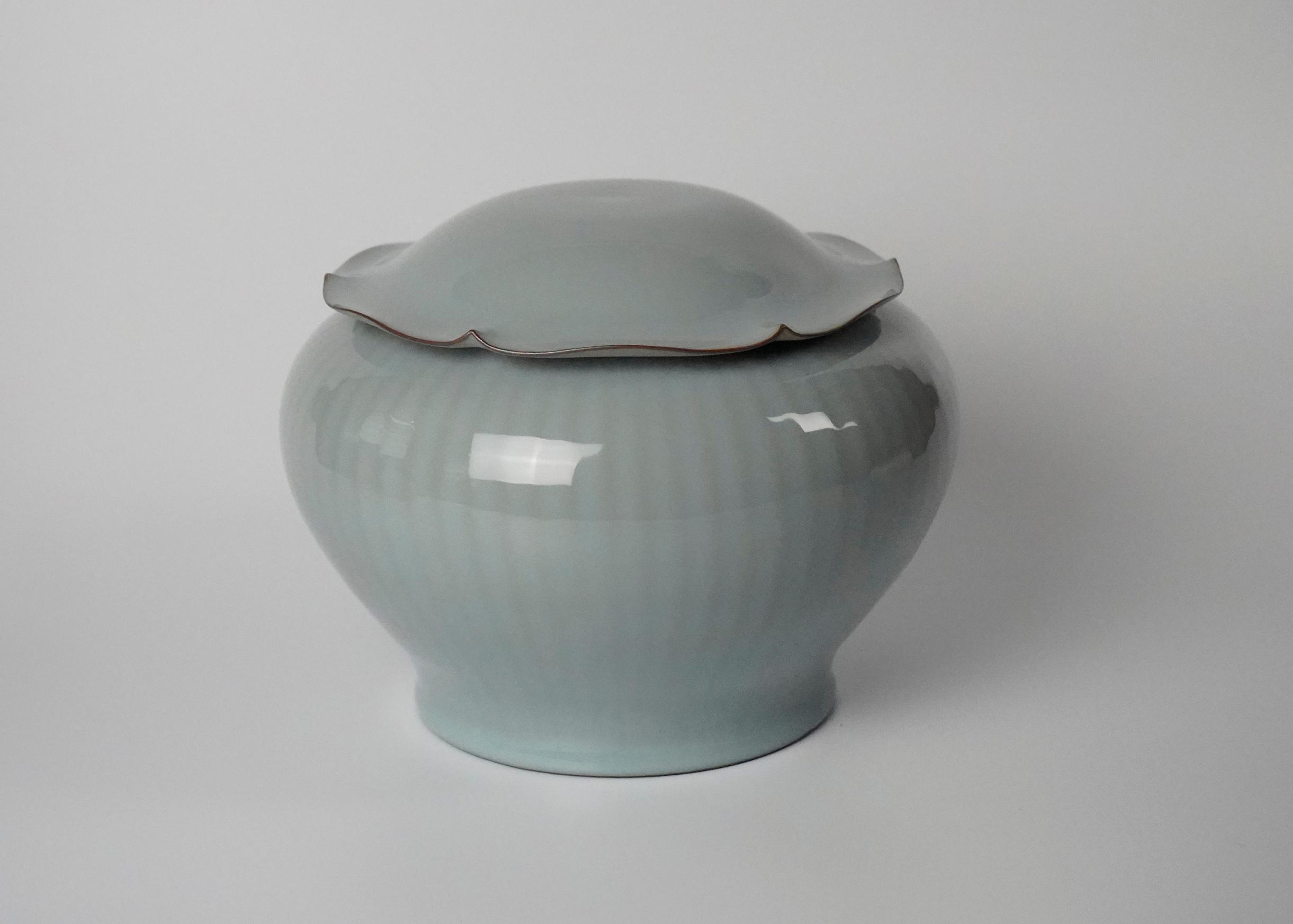
Overhisyearsofresearch,KawaserealizedthatmuchofthebeautyandgraceofChinese celadonceramicscomesfromtheiruseoforganicforms Thesenaturalformsfoundtheirway intoKawase’swork Greattechnicalskillisrequiredtosuccessfullyfiresuchalargepiece,and Shinobuhasdonesoexpertly.Faintlinesemergefromtheblue-greenceladonglazedbodyof thissakejar Meanwhile,thetopofthisjarrecallstheshapeofalotusleafrestingonastone Thepieceisextremelymeditativeandevokesimagesofflorainharmonywithwater,a refreshingcontainerusedforcarryingsake
Object metadata:

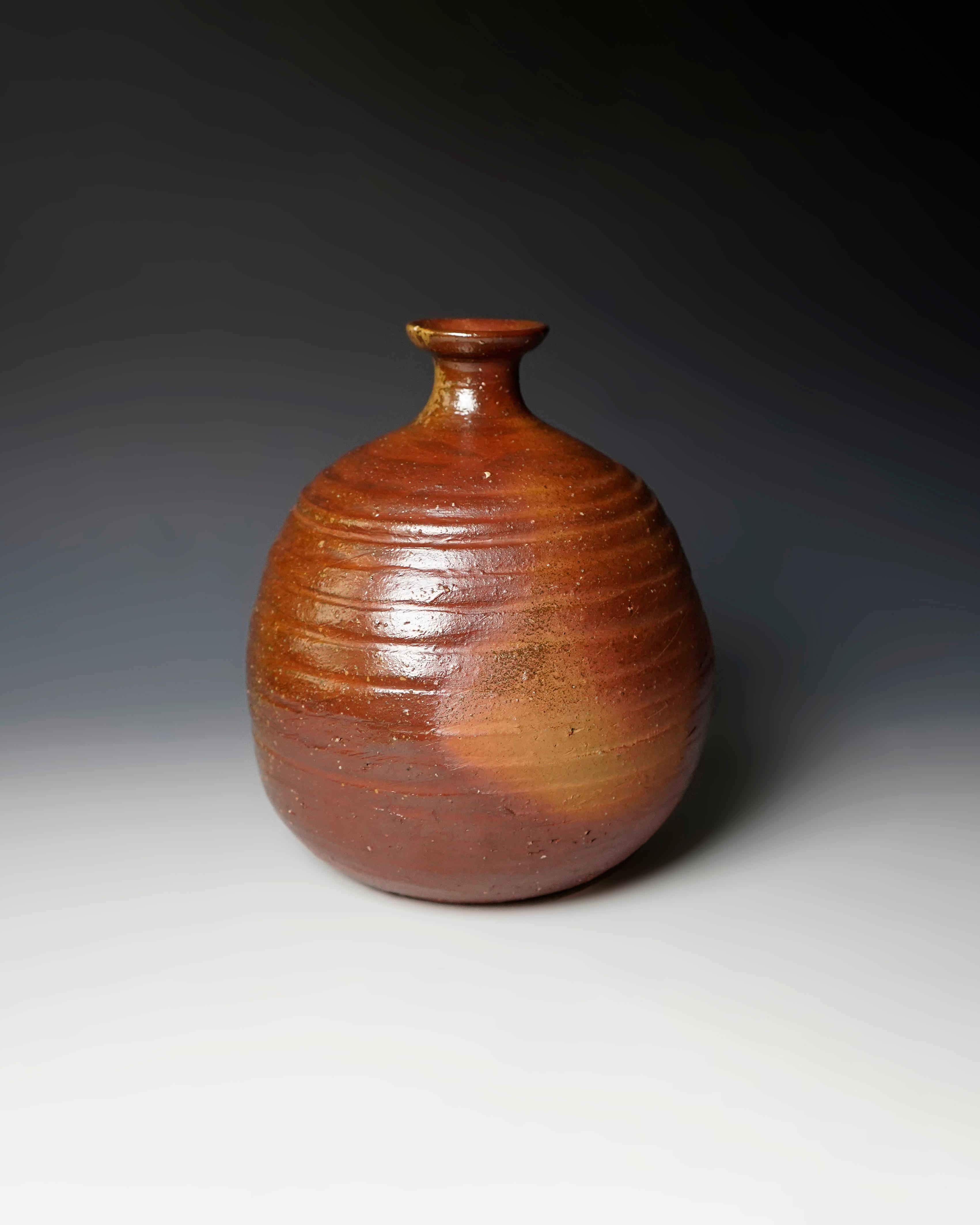
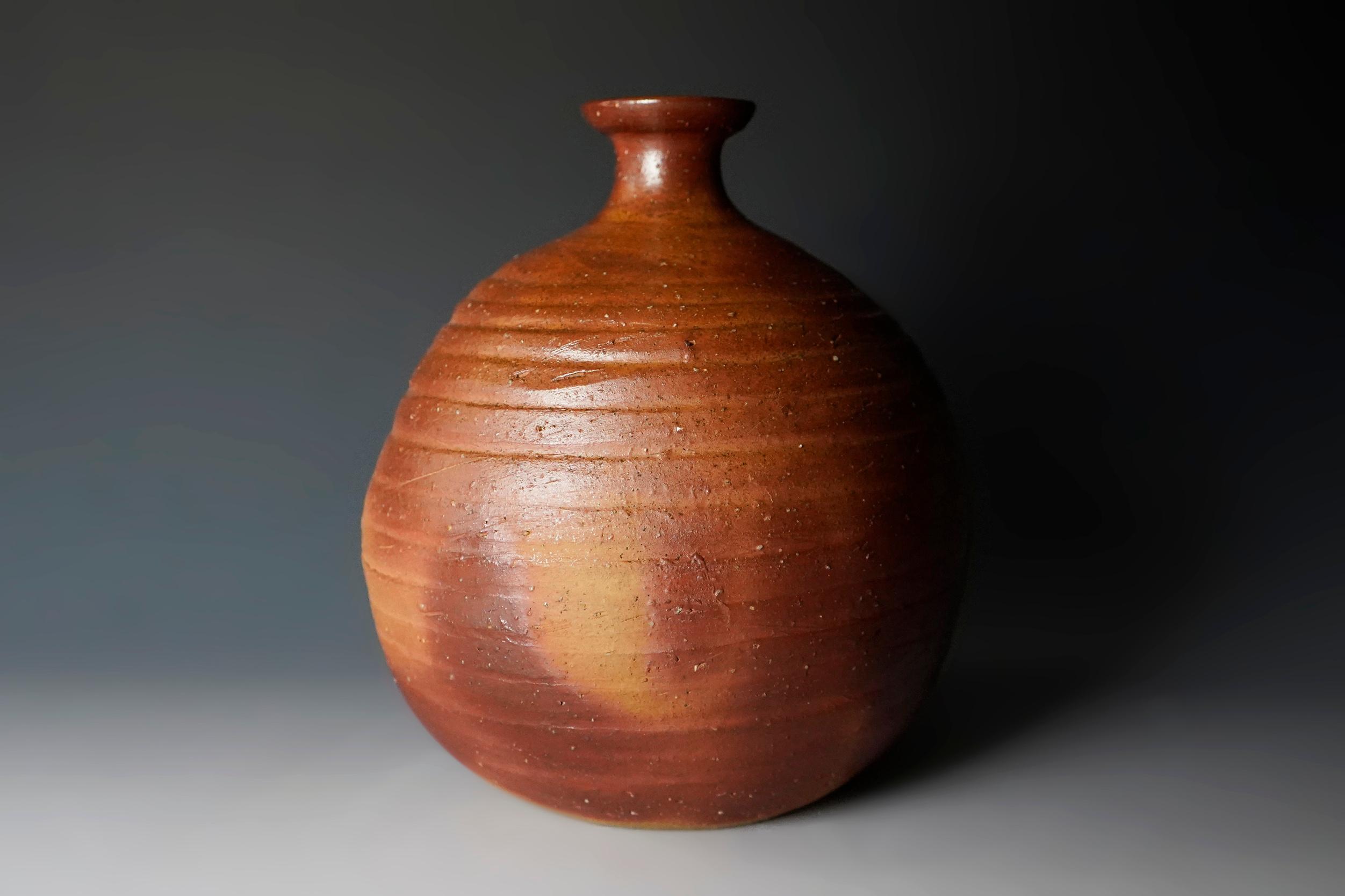
BizenhashadatotaloffiveLivingNationalTreasuresovertheyearsand themostrecenthasbeenIsezakiJun,whowasdesignatedin2004.A moderntwistisgrantedtoacenturiesoldtechniquebyhandsofaskilled contemporarypotter
IsezakiisalsoknownforhavingrevivedtheAnagama(singlechamberfiring) in1961.Theanagamaisatypeofsingle-chambertunnel-likekilnthatisdug intoahillside It’safiringmethodthatsuitsnaturalwood-ashfiring,from whichsuccessfulresultsarearesultofbothcarefuldesignandfortuitous chance.Hisworksreflectthisdualityinhisplannedpatterningwhich frequentlytakesonamodern,geometricquality,aswellasthesubtle surfacequalitiesoftraditionalBizenclay

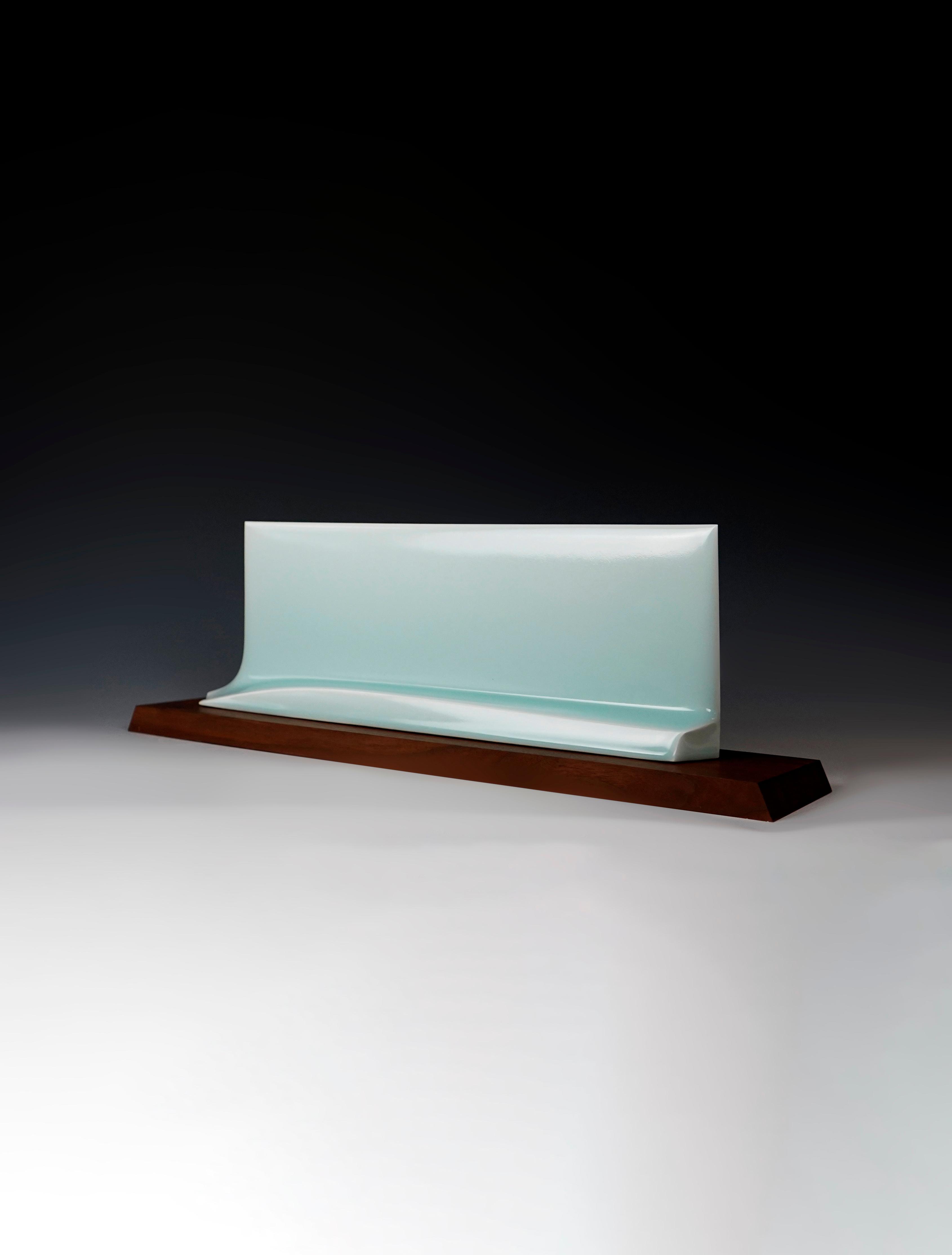
ArguablyJapan’smostpopularceramicceladonartist,FukamiSueharu beautifullyutilizespureceladonbluetogreatandoriginaleffect Hismasteryof celadonglazeallowshimtoproduceawidevarietyofblues:clearskyblue,deep richaqua,paleblue-grey,andapurebluethatisalmostwhitehaveallappeared inhisoeuvre Hemakesbothfunctionalandsculpturalworks,butallofhis ceramicsillustrateapurityofdesignandoriginalityofspiritthatarethemarkof atruemaster.Fukami’sceramicsarewidelycollectedandcanbefoundinmany museumcollectionsaroundtheworld Heistrulyatreasuredinnovatorofthe ceramicarts.
Thispieceisbeautifullybalancedwithanasymmetricalelegance Itisenclosed initsoriginalsignedwoodenboxbytheartist.

Object metadata:
FUKAMI Sueharu 深⾒ 陶治 (b. 1947)
Untitled 無題 , 1985 With signed wood box
Celadon Porcelain on Wood Base
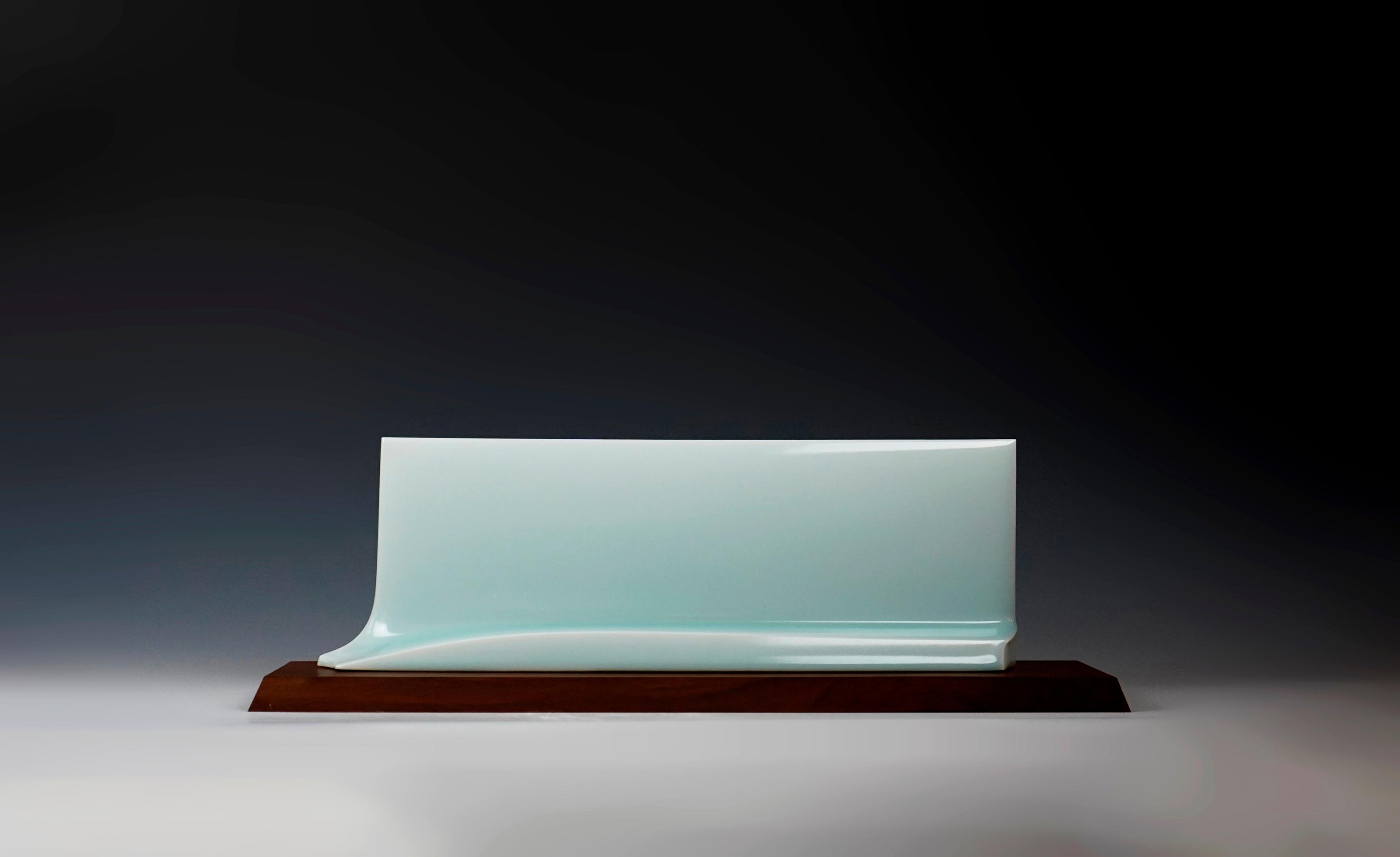
H6.2" x W18" x D2"
H15.7 x W45.7 x D5.0 cm
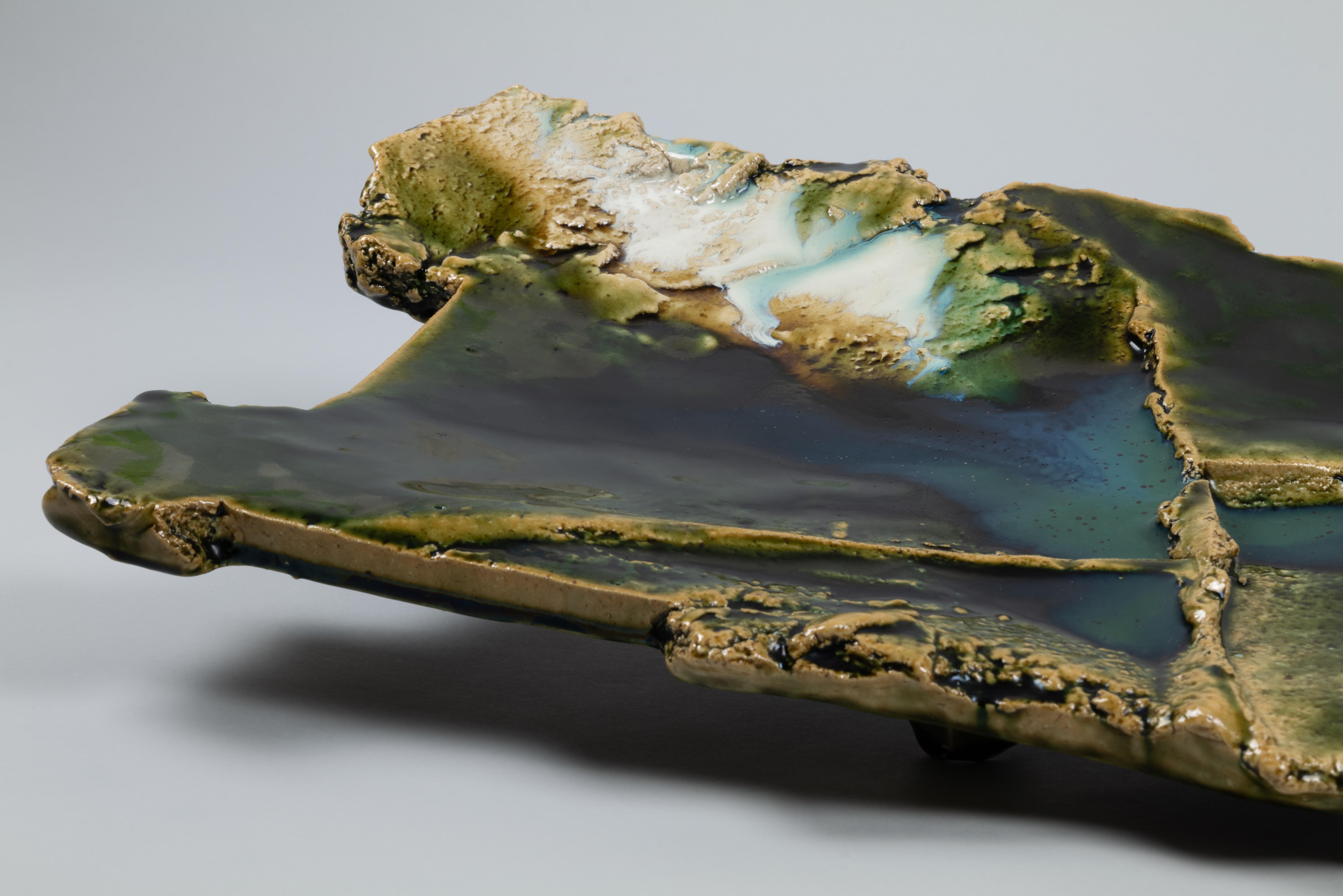
Characterizedbyvibrantglazesandincrediblytexturedclay,HigashidaShigemasa's powerfulOribeceramicsfeaturelushpoolsandflowsofglazeacrosscraggylandscapes Thesestunninglandscapesbecomedramaticplatesandmonumentalboxes Thisplatter hasadeepgreen,recallingthecolorofsummer.
Higashida'selegantOribeandShinoceramicshavereceivedravereviewsfromcollectors andconnoisseursalike,andhavebeenexhibitedwidelythroughoutJapanandabroad, includingatGalleryMiyasakaandTakashimaya,Sogo,andWakodepartmentstores Dai IchiArtshasbeenproudtoshowhisworkmanytimes,andcontinuestofinddelightinhis stunningcreations Higashidaslowlyrevealshis"accidentalbeauty"tous Inhisown words:

Object metadata: HIGASHIDA Shigemasa 東⽥茂正 (b. 1955)
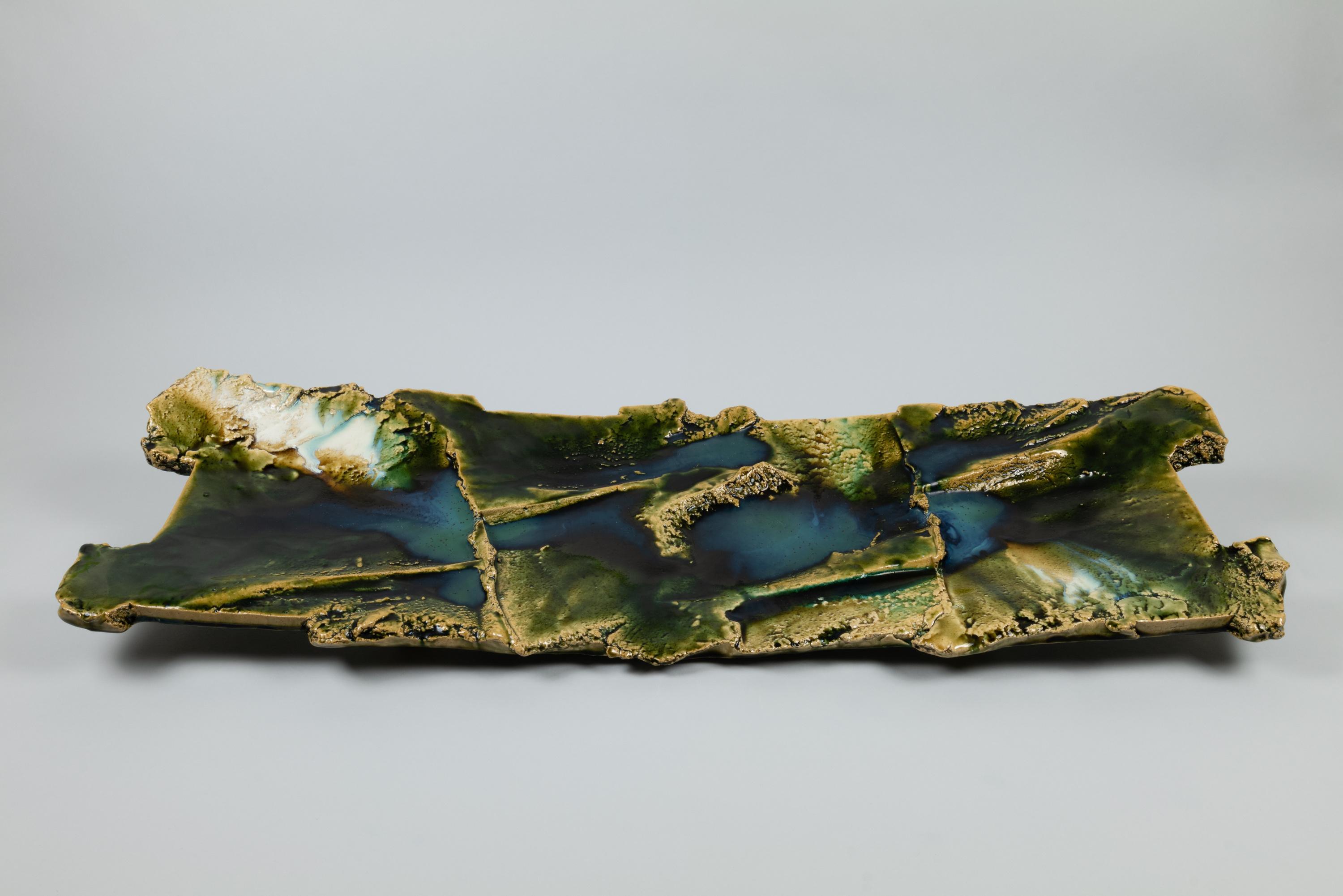
Oribe Large Platter 織部⻑⽅⽫, 2020
Oribe Stoneware H3.5" x L38.3" x D12.5" H9 x L97.5 x D32cm
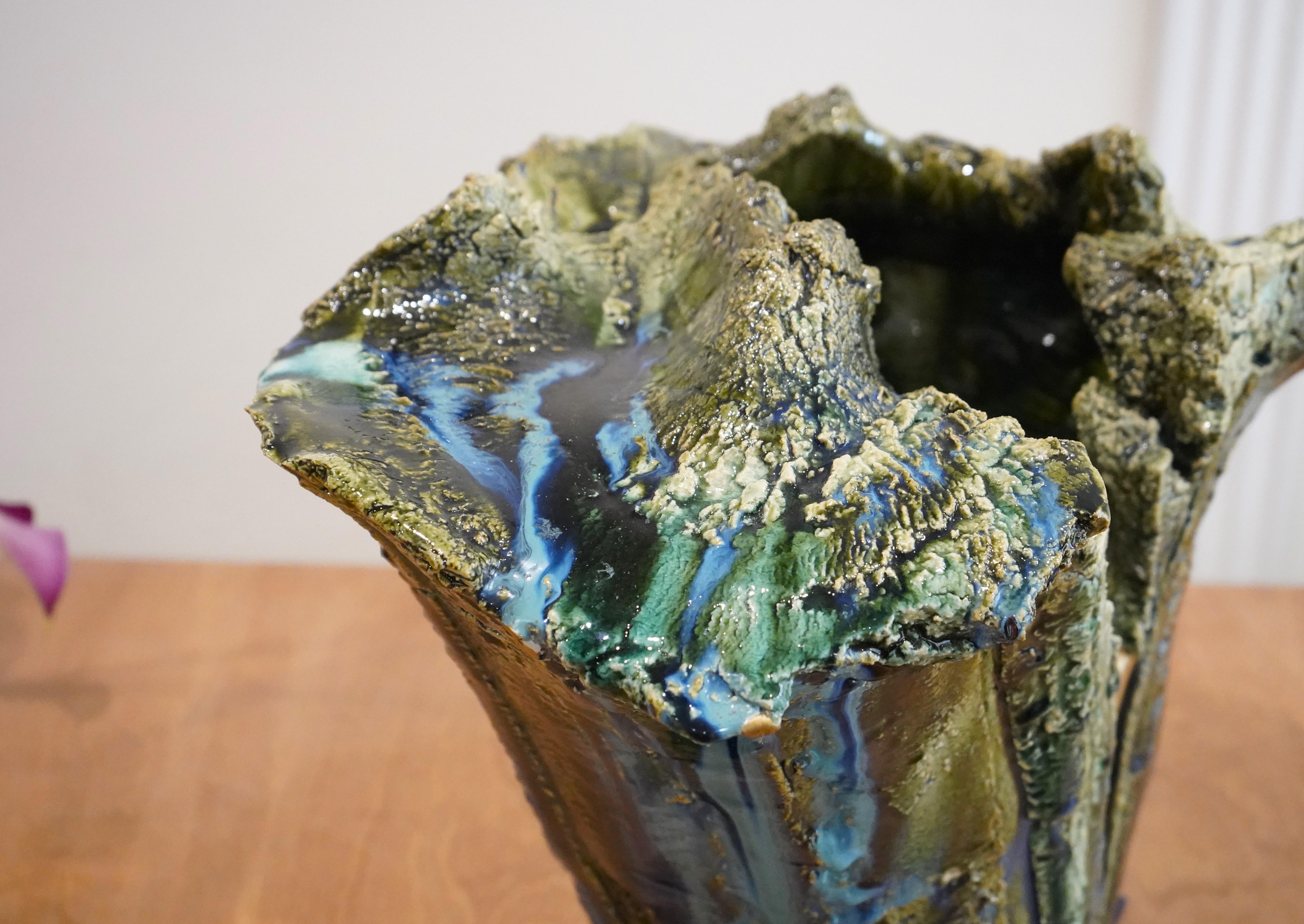
YamaguchiMakotoisthesixthgenerationofaceramicfamilyinSeto.Hefacesthechallenge ofbringinghisfamilytraditionstoacontemporaryvisioninasaturatedSetopotteryscene. ThechallengehehassetouttoachievespecificallyencompassestheglazesofMino-yaki (Shino&Oribe),andKisetoyaki Indeed,heismovingcloserandclosertothisachievement witheveryexhibitionandfiring ThisOribepiececapturesthegrandeurofgrassyearthen landscapeswithturquoiseandTurkishblueglazepools Itisalsocomplimentedbya contemporaryform.
Yamaguchi'sworkshowacontemporarytakeoftraditionalglazes InhisOribeglazes,heisin pursuitof“Utsushiうつし”,whichmeans“reproductionorcopyfromtraditionalpiece,in ordertostudytechniques”Yamaguchithinksthere’stoomuchegoincontemporaryworks, andone’scharacterissupposedtoarisenaturallyinanyform,heisexpressinghimselfin classicform.
Object metadata: YAMAGUCHI Makoto ⼭⼝真⼈ (b. 1978)

Oribe Flower Vessel雷鳴, 2022 With Signed Wood Plate
Glazed Stoneware H17" xW22" xD21” H43.1x W55.8x D53.3 cm
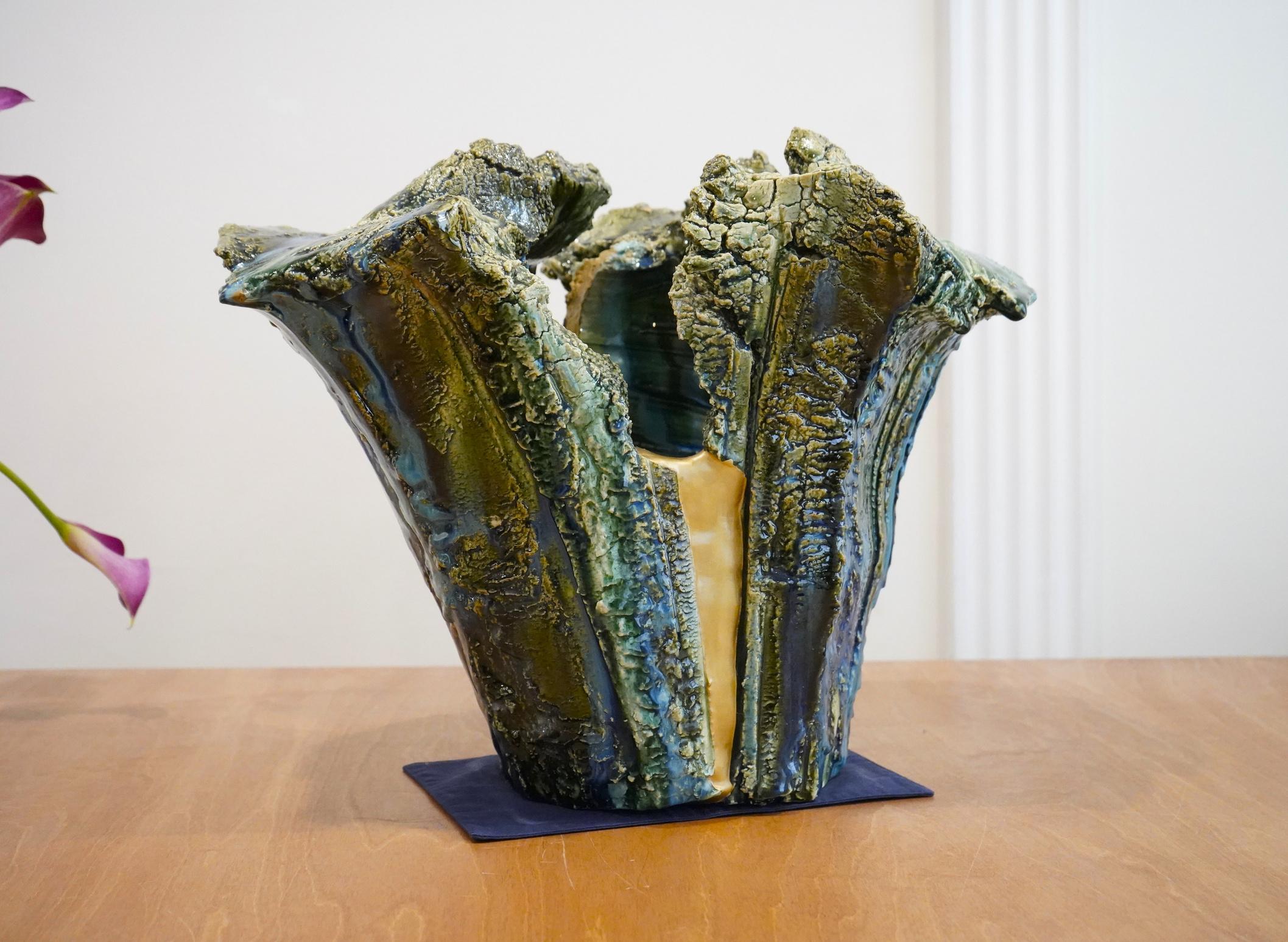

YamaguchiMakotoisthesixthgenerationofaceramicfamilyinSeto.Hefacesthechallenge ofbringinghisfamilytraditionstoacontemporaryvisioninasaturatedSetopotteryscene. ThechallengehehassetouttoachievespecificallyencompassestheglazesofMino-yaki (Shino&Oribe),andKisetoyaki Indeed,heismovingcloserandclosertothisachievement witheveryexhibitionandfiring ThisOribepiececapturesthegrandeurofgrassyearthen landscapeswithturquoiseandTurkishblueglazepools Itisalsocomplimentedbya contemporaryform.
Yamaguchi'sworkshowacontemporarytakeoftraditionalglazes InhisOribeglazes,heisin pursuitof“Utsushiうつし”,whichmeans“reproductionorcopyfromtraditionalpiece,in ordertostudytechniques”Yamaguchithinksthere’stoomuchegoincontemporaryworks, andone’scharacterissupposedtoarisenaturallyinanyform,heisexpressinghimselfin classicform.
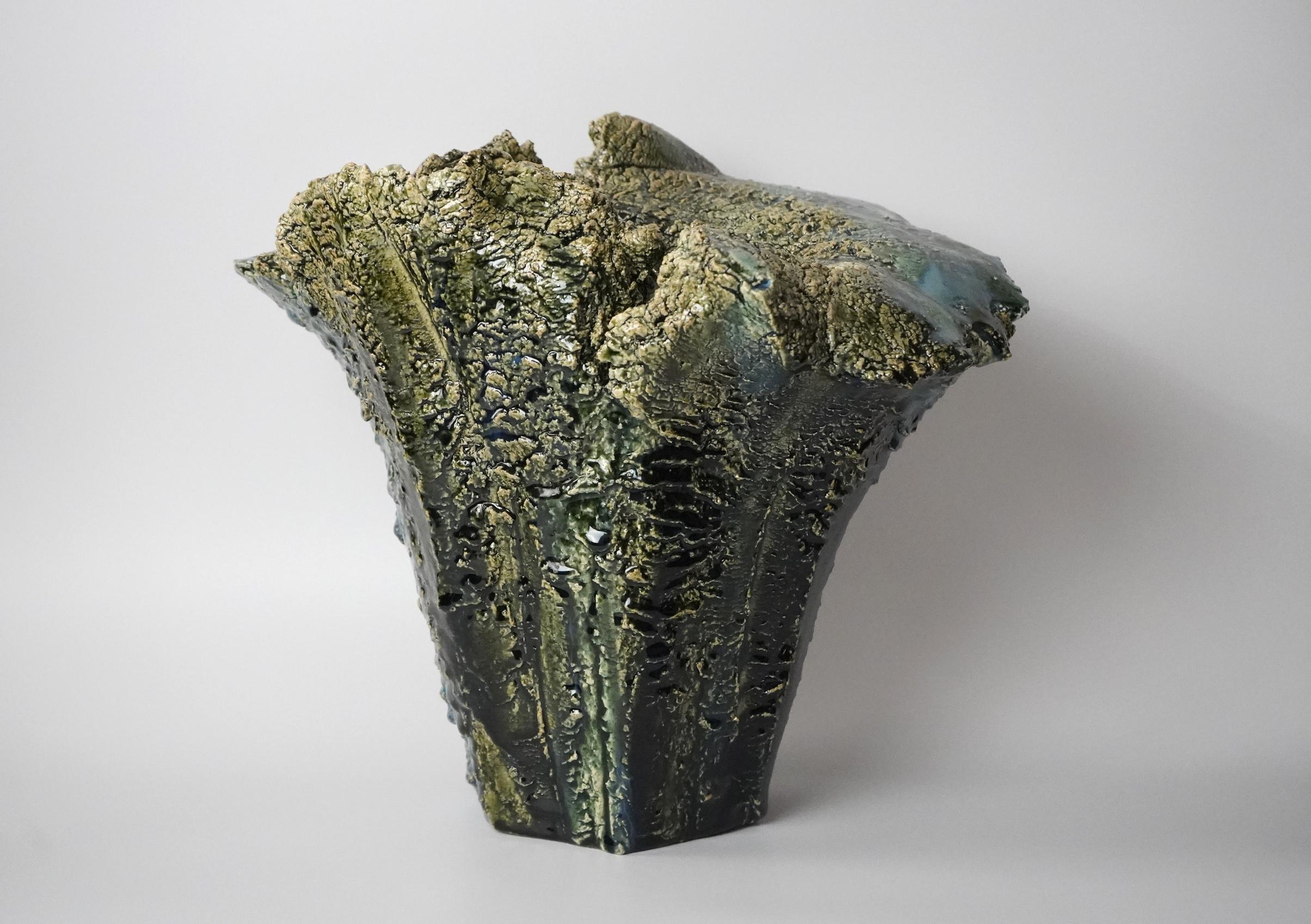
Object metadata: YAMAGUCHI Makoto ⼭⼝真⼈ (b. 1978)

Oribe Flower Vessel織部花器, 2022
With Signed Wood Plate
Glazed Stoneware
H14.5" xW17.5" xD12.5” H36.8x W44.4x D31.7 cm
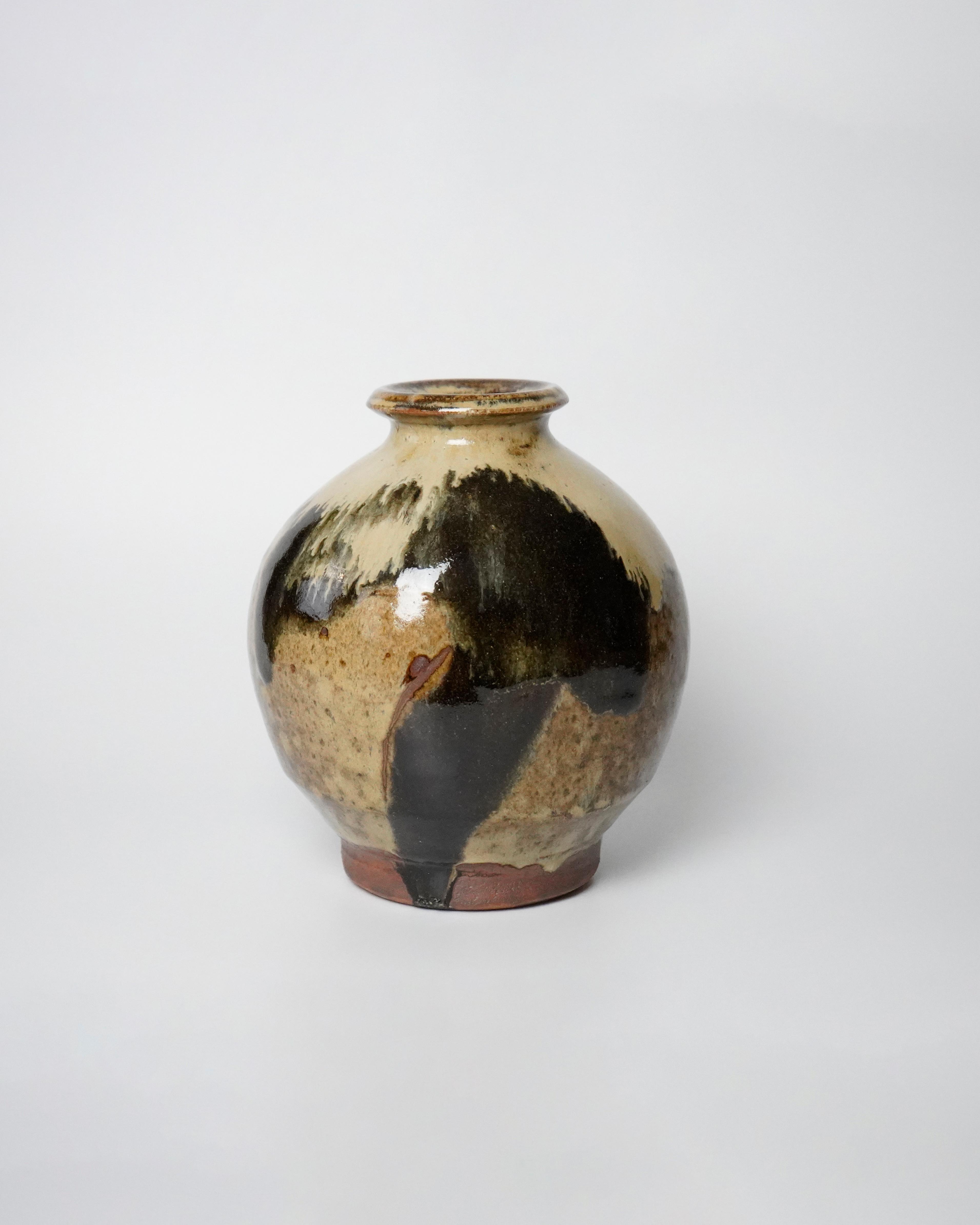
BornasthesecondsonofMurataTasaburoandRetsuin1904,MurataGengrewupwiththeearthina farmingfamilyintheIshikawaprefecture HestudiedclassicalpaintinginKyotosuntilheenteredthe KansaiBijutsuGakuin(KansaiArtAcademy)in1922 However,theonsetofwarshatteredhisdreamsof beingapainter Hisfirstencounterwithpotterywaswhenhevisitedafolkcraftexhibitionshowcasing Mashikowaresin1934inMatsuzakaya,Tokyo Itwasthenthathehaddecidedtorelocatepermanently toMashikoin1924,studyingunderHamadaShoji Hedebutedwithhisfirstsoloexhibitionin1955at IzumiKogeicraftshop,Tokyo;atlast,MuratawasconsummatedasaMashikopotter Hedisplayedhis honedmasteryovertraditionalglazessuchasNuka(rice-husk),kaki-yu(persimmon),andvariousiron glazesthataredisplayedinascrollingpatternoverhisfunctionalclaywares
Hisfunctionalformswithhighshouldersaremarkedwithdecisivefacetsandpatchmarks,whilehisuse ofricehuskglazesandmultipleironglazesdepictterrestrialscenesandpowerfulnaturalphenomena. WhileMurata’ssurfacescapesclothehisworkswithformallyorganizedimageryandsoulfulrhetoric informedbyhisindividualisticsightwhichconsolidatessurface,affect,andrepresentationalmetaphor, onecannotignorethematerialityofhisworks Signsoftheobject’smaking-suchasfiringmarksthat signaltotheWabi-SabiphilosophiesthatunderlieMingeiware-attesttothewood-firedtraditionsof Mashikokilns

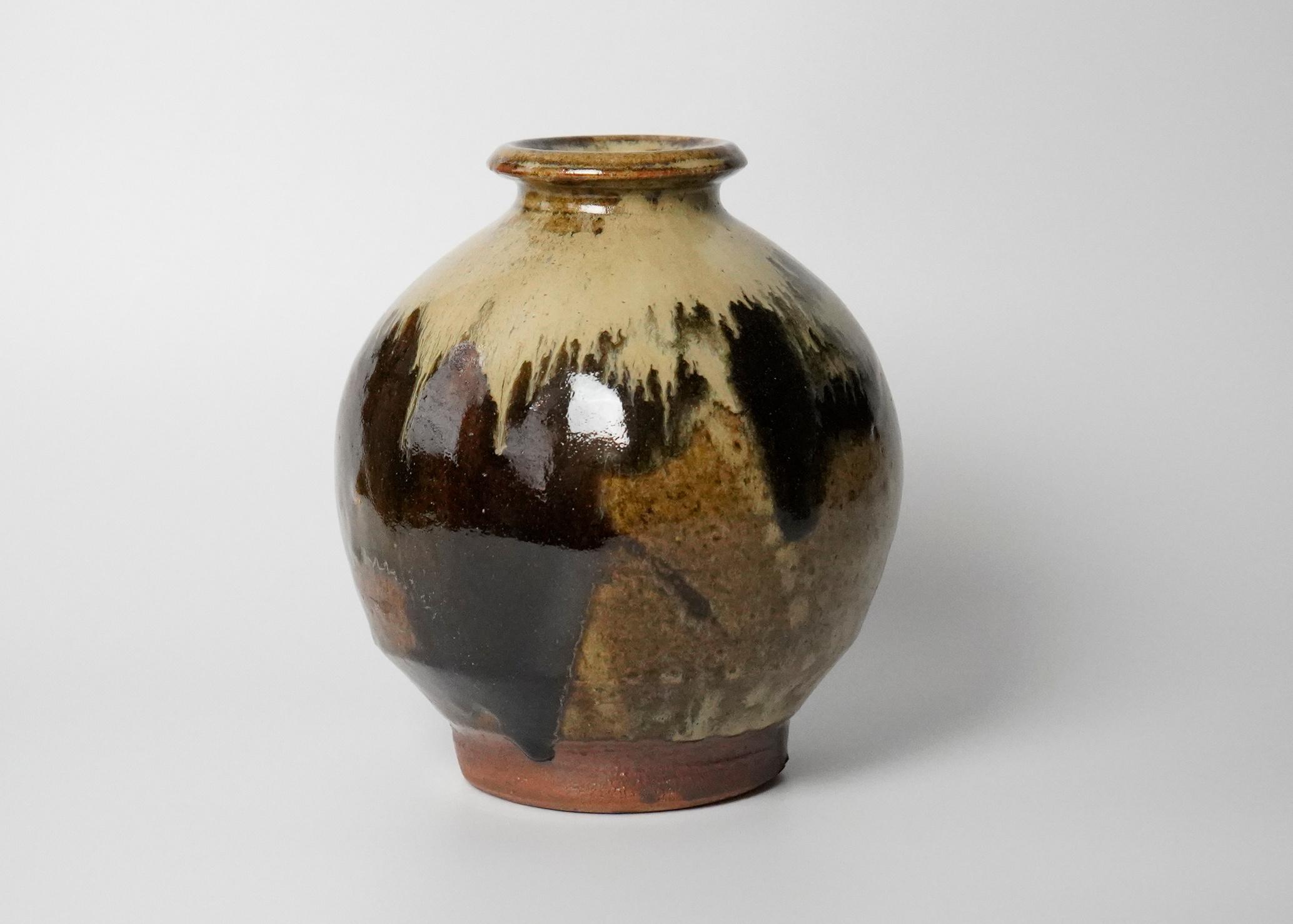
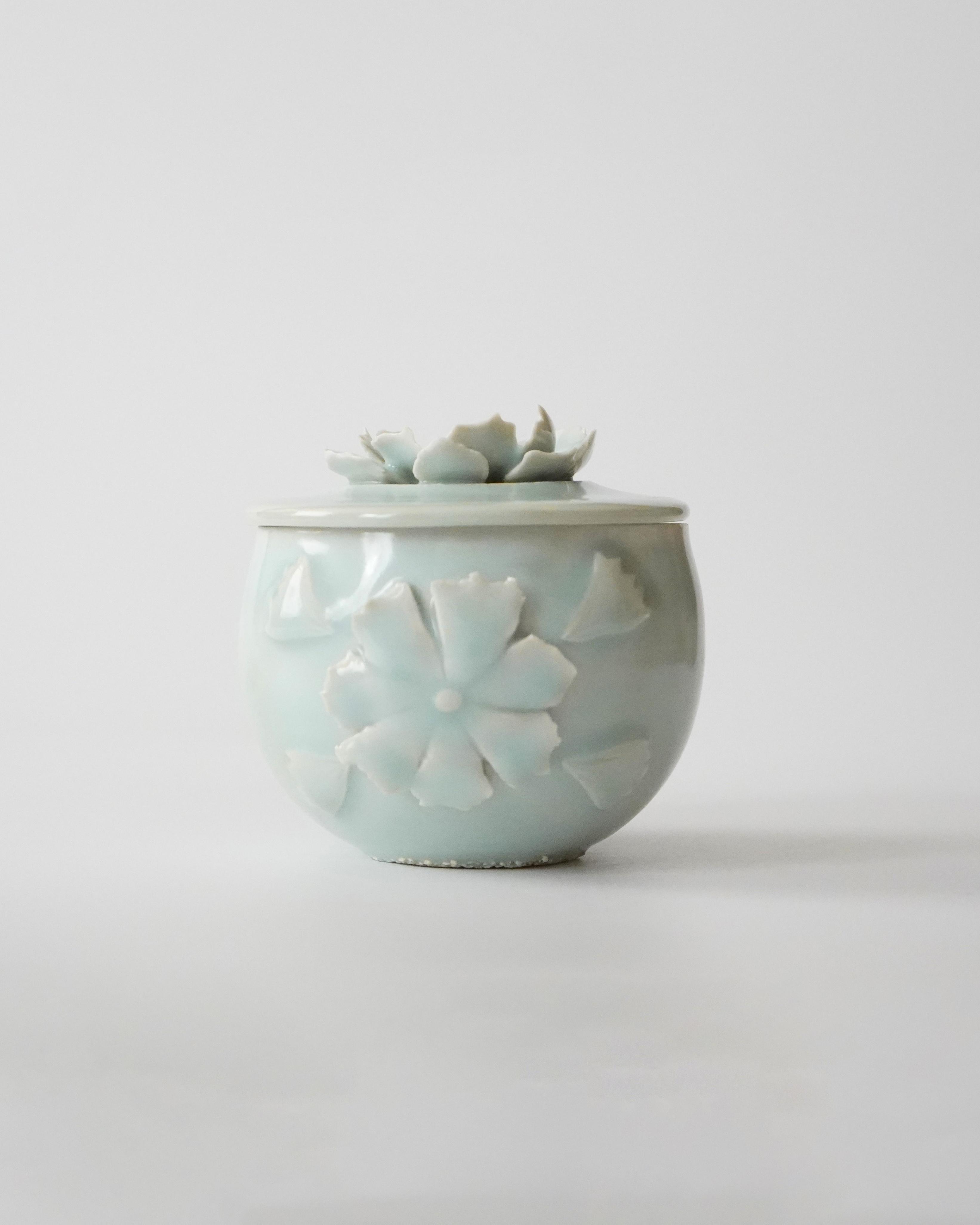
OneoftheoriginalfoundersoftheSodeishamovementalongsideYamadaHikaru, SuzukiOsamu’sworksdisplayanabstractionofanimalisticimageryusing minimalisticsensibilities.AsaSodeishaartist,SuzukiOsamueschewedfolk-craft movements,whichdominatedtheJapanesepotteryindustry.Instead,hetreated ceramicsasasculpturalmedium,placingemphasisonitsinterpretativeartistic value.SuzukiOsamutookonmanystudentsinhislifetime,andhislegacylivesonin manytalentedpottersoftodaywhoallpushthefieldoffunctionalandsculptural ceramicsintothefuture

ThisceladonincenseburnershowcasesSuzuki'sstudyoffunctionalwaresinspired bytraditionalChineseceladon Uponcloserinspection,ithasgeometricand sculpturalsensibilities Theflowerpetalsaresharpandformadynamicpattern, whiletheincensecontainertopshowcasesareliefform
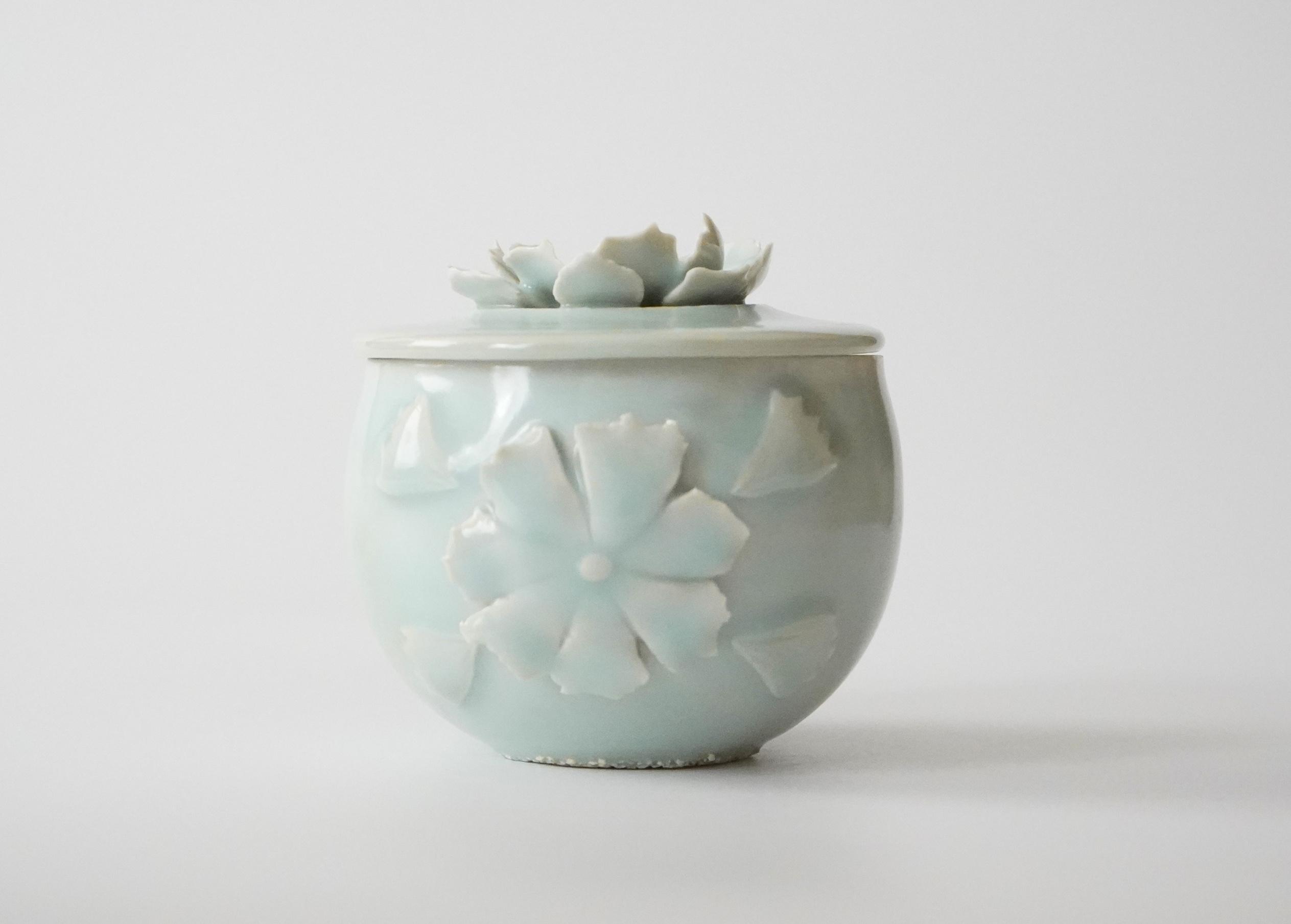
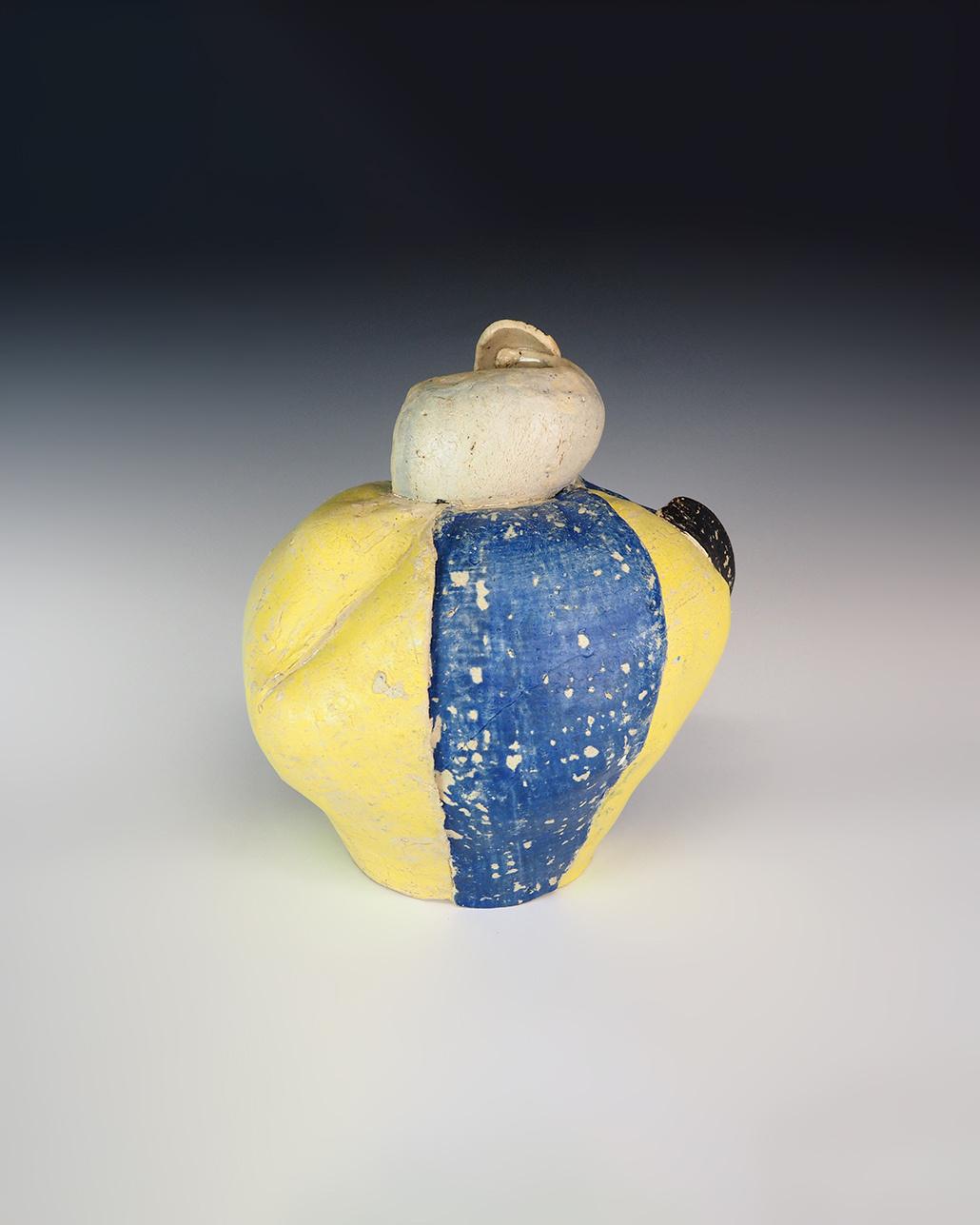
KimHono’s(b 1958)takeonthejarisnothinglessthanrevolutionary Hiscolorisbold andartsy,andhisskillishighlyunusual,resultinginavesselthatbothsurprisesand delights Hisjarsarebuiltfromlargeandflatstripsofclay Thesearemoldedandcreased intohisdesiredform,usuallyanodtotraditionalshapesbutwithplayfuldeviationsfrom theexpected Histendercolorisunglazed,leavingasoftmattesurfacethatretainsthe textureoftheclay.Hono’sorganicformsandcolorssuggesttheearlybudsofspring flowers,tenderandlovely.

Hisceramicsfocusontheartofdailylife.Howdoesoneelevateone'slifevisually?Heis interestedinelevatingdailyutensilsbyplayfulmeans,recallingthecolors,texturesand feelingofchildhood.Inthispieceforexample,heplayfullyrecallstemari(⼿まり),whichis ahandballfromfolkartandJapanesecraft.
Object metadata: KIM Hono ⾦憲鎬 (b. 1958)
Jar Yellow and Blue, 2017
With Signed Wood Box
Stoneware with Polychrome pigment H10” x D8.2” x W9.2” H25.5 x D21 x W23.6cm
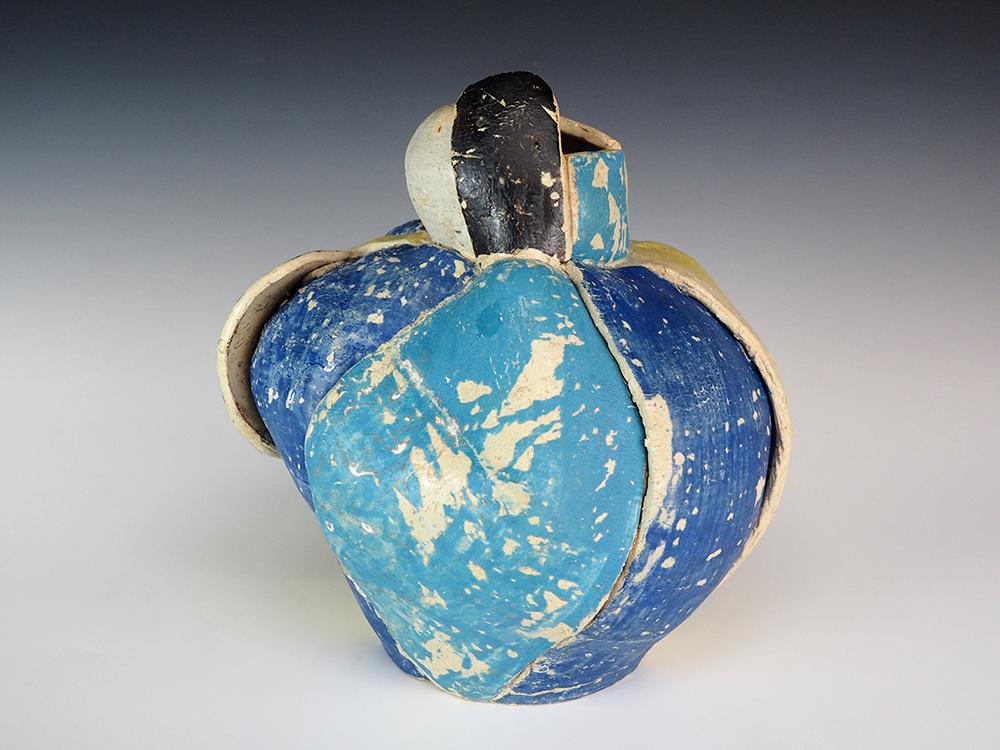
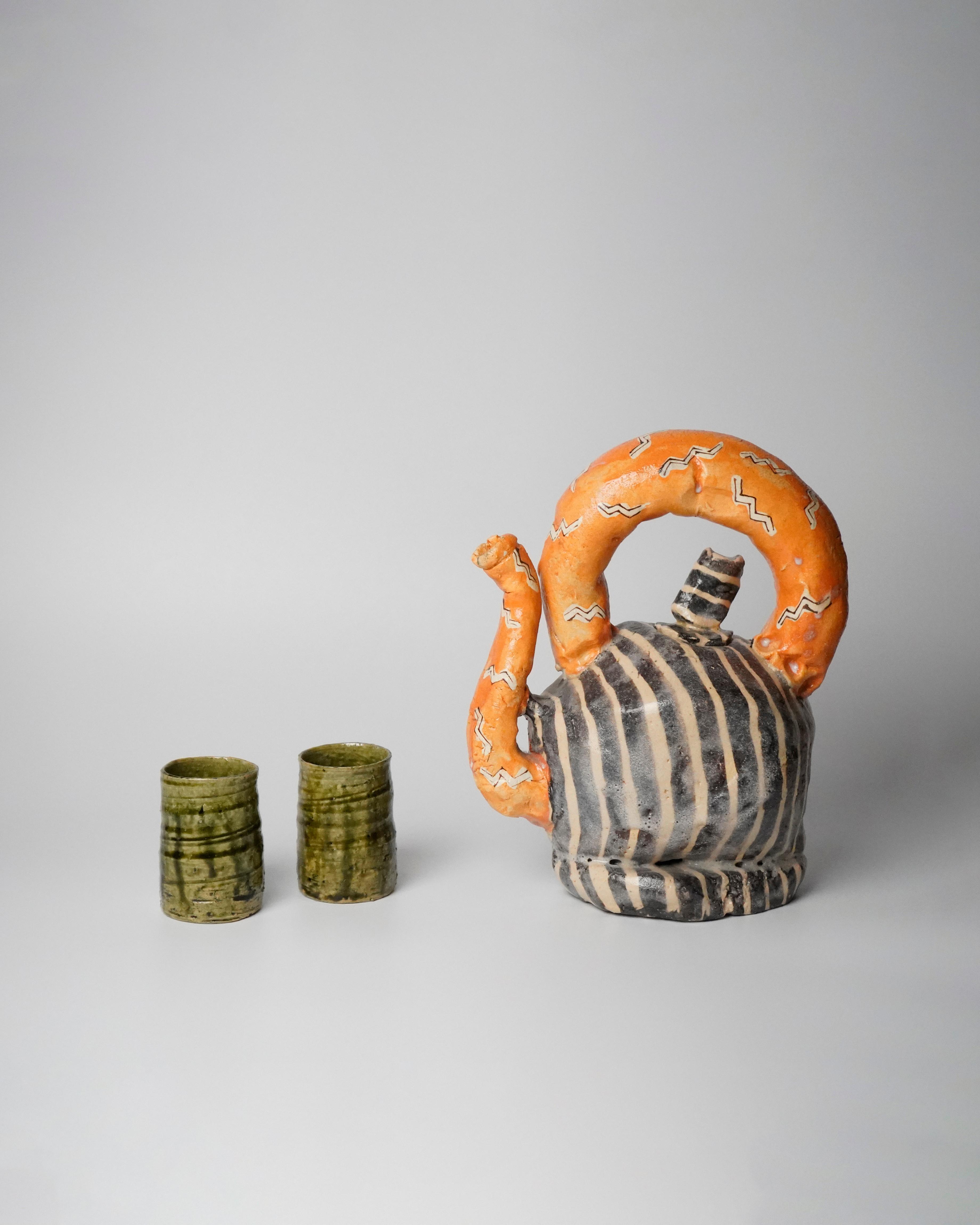
ThisteapotbymasterceramicistSuzukiGoroisglazedinthetraditionalaka-oribestyle,orredoribeglaze type OribewareholdsauniqueplaceinJapaneseceramics,originatedin17thcentury,largelyproducedin Minoarea.OribewareisanindispensablepartofanyJapaneseModernartcollection.Initsinception,Oribe warewasknownforitsdaringdeparturefrommonochromeconventionsinpotteryduringtheKeichōand Gennaeras(1596–1624) Thisahead-of-its-timeexperimentalspiritlivesoninmodernceramics RedOribe isoneofthefourmaintypesofOribeglazes.
SuzukiGoroisoneofthemostunrestrainedoftoday’sOribeartists Heseemstograndlydistorteverything hetouches,andhiswildimaginationandchildlikedispositioncanbefoundinhisplayfulpainted decorations:
“Oribekeepsdeveloping.Itneverstayedinoneplace.SoIcreatewhatevercomestomymind,oneafter another Ineverstop IfeellikeI’mplayingwithclay Theplayfulnessmakesone’slifeinteresting”
SuzukiGoro'sworkcanbefoundinnumerouspublicandprivatecollections,includingtheMetropolitan MuseumofArt,NewYork;theMuseumofFineArt,Boston;theJapaneseCeramicsMuseum,andmany others Suzuki'splayfulandengagingworkproveshispositionasamasteroftheceramicarts Hehastaken onmanystudents,includingtheyoungeremergingtalentsYamaguchiMakoto&SawaKatsunori,whogrew upwithhistrainingundertheirfamilykilns
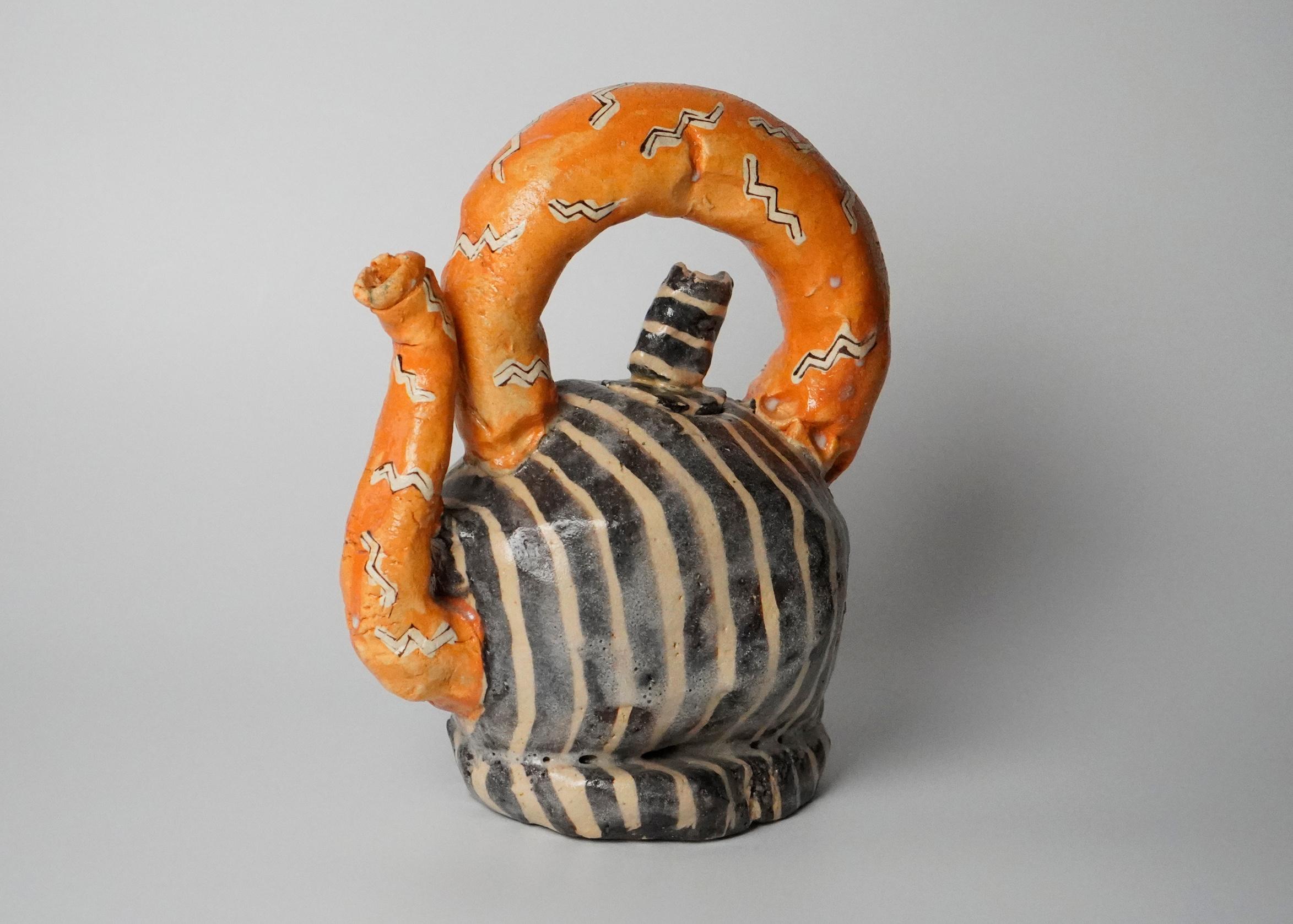
@daiichiartsltd

Object metadata:
SUZUKI Goro 鈴⽊五郎 (b. 1941)
Red Oribe Teapot ⾚織部⼩瓶
With Signed Wood Box
Stoneware H10.5" x W8.5" x D6.5
H26.6 x W21.5 x D16.5 cm
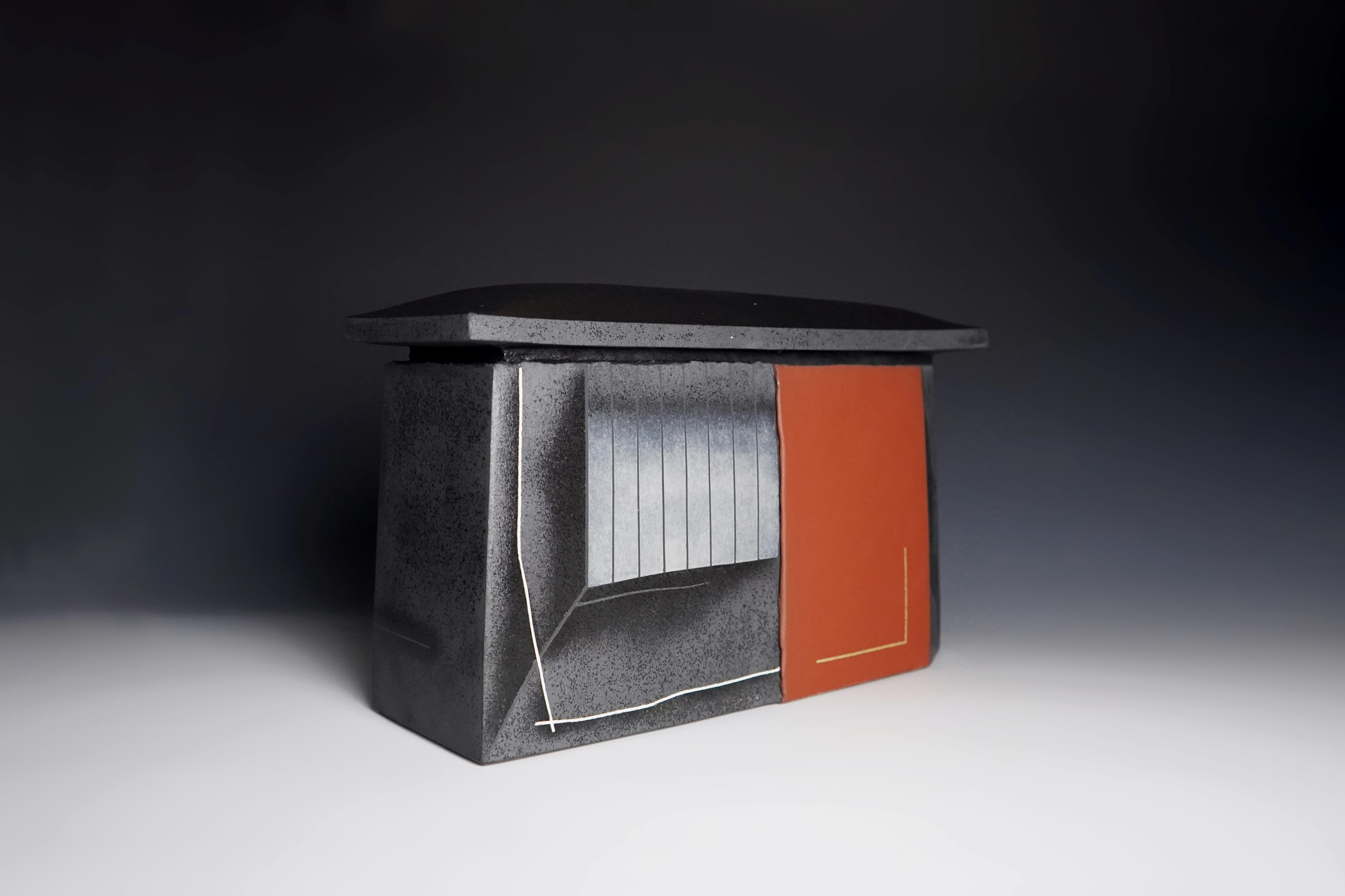
HayashiYasuobeganhisartisticcareerinthe1950s,andisnowconsideredoneofthemostimportant forerunnersofabstractionincontemporaryJapaneseceramics AsafoundingmemberoftheShikokai associationofpotters,heplayedaroleinthemodernizationofthemediumfromtheverybeginning The Shikokaigroupboldlyexplorednewformsforceramics,andtookthemediumintrulyinnovativesculptural directions NotonlywasHayashithegroup’syoungestmember,butalsoitsmostcelebrated
Attheexceedinglyyoungageof16yearsold,HayashiYasuo(b 1928)wasenlistedtotheJapanesemilitary asapartoftheJapaneseSpecialAttackUnitofmilitaryaviators,aKamekazipilot.Thoughitnevercameto bethatheflewamilitarymission,histrainingregimeswereintenseandfulloftrauma Thispieceisa mournfulpiecethatmeditatesuponhisexperiencesflyingovertheKyotosky Hesawtherooftopsof Kyoto’sthatchedandceramicbrickroofing,andinterpretedthoseformsthroughthevisualvocabulariesof geometricabstraction Inthispiece,aswellashis“MemoryoftheHouse''series,heplaysupondistance, depth,andmotioninhislayeringoflinearformsona2dimensionalsurface,interplayingwiththenotion that3dimensionscanberepresentedon2dimensionalsurfacesinthiscompactpiece.Thisinterplayin perceptionisacommonmotiffoundinhisoeuvre

Object metadata: Hayashi Yasuo 林康夫
Memory of a House #1, 2003 Stoneware
H9.1" x W17" x D6" H23.1 x W43.1 xD15.2cm
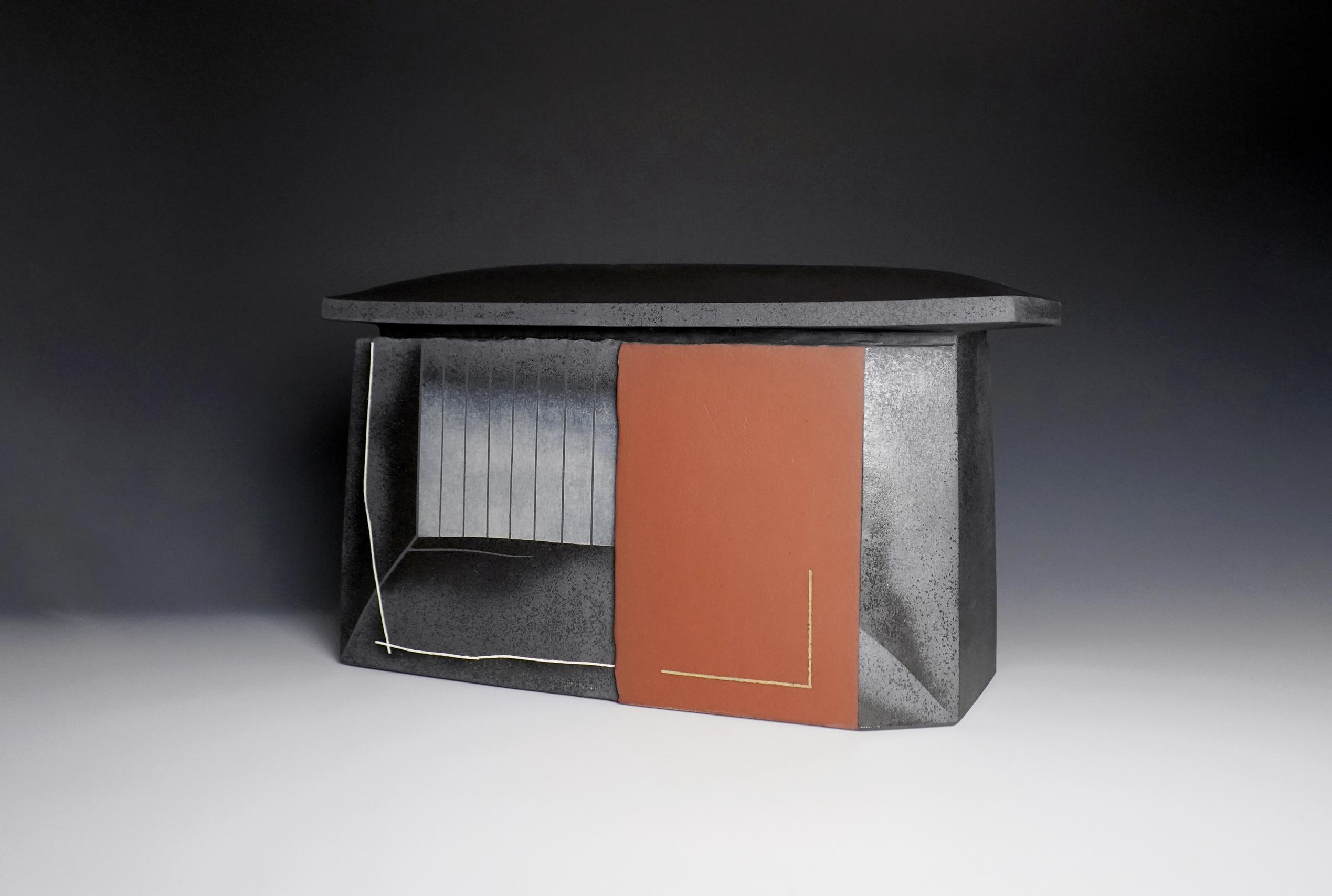
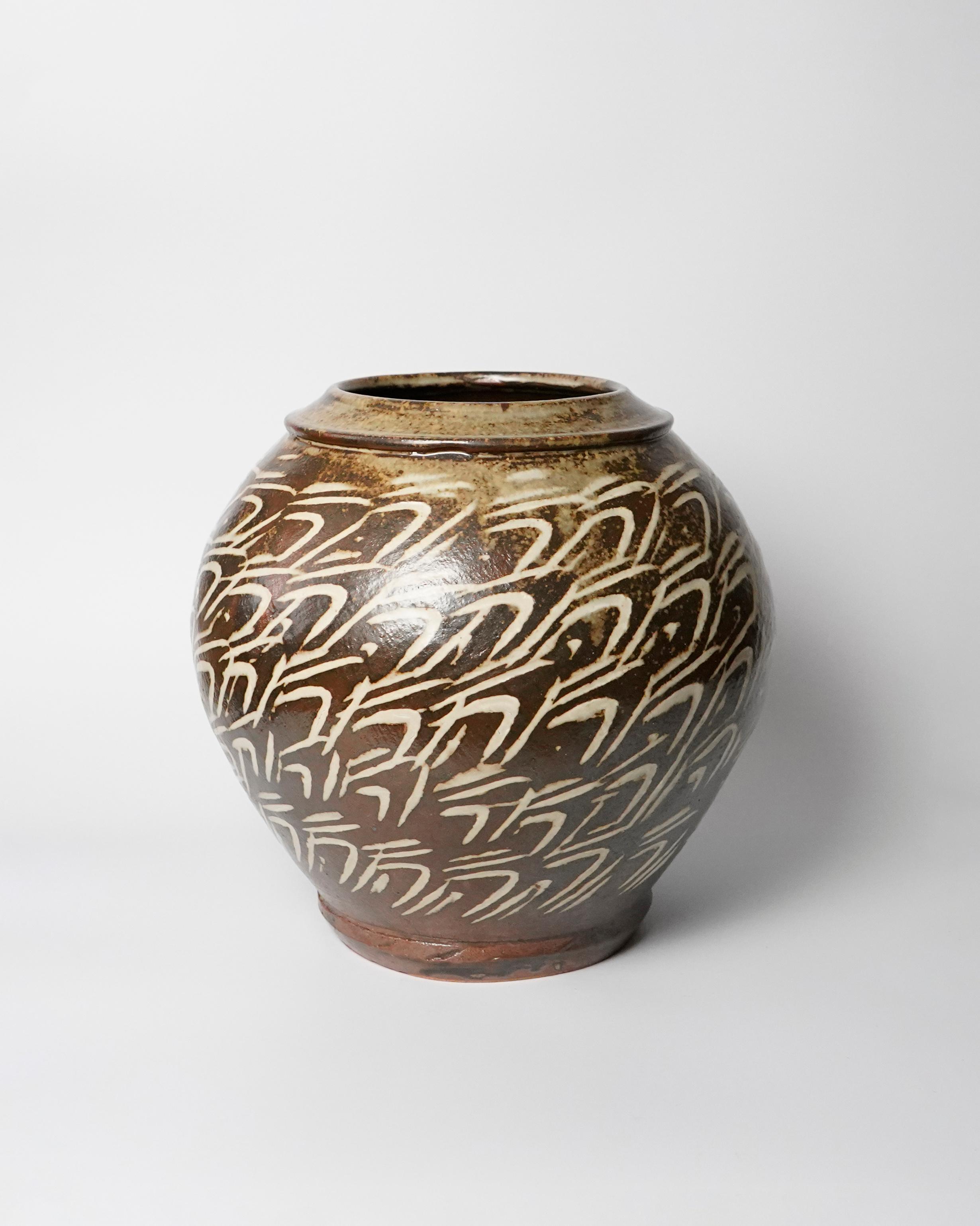
BasedinMashiko,ShimaokaTatsuzowasdesignatedaLivingNationalTreasure in1996.Hisdesignationwasforfolkcraft,particularlyhisrope-impressedinlay wares(mingeijomonzogan) Shimaokawasahighlyskilledpotterwhomastered andcombinedanumberoftechniques.Hisfathermadebraidedsilkcordsfora living Thisfamiliallineage,combinedwithhislaterexposuretorope-impressed Jomonperiod(c.6000–300BCE)earthenwares,enabledhimtodevelophis signaturestyle Hisropeimpressedsurfaceswereunique:headdedtheKorean mishimawarestyleinlaythathewasintroducedtobyhisteacherHamadaShoji, asKoreanceramicswereinfluentialinthemingeimovementduringthe1920sto 30s.Finally,hisencounterwithGermansaltglazedwaresledhimtodevelopa bodyofworkusingthattechniqueaswell

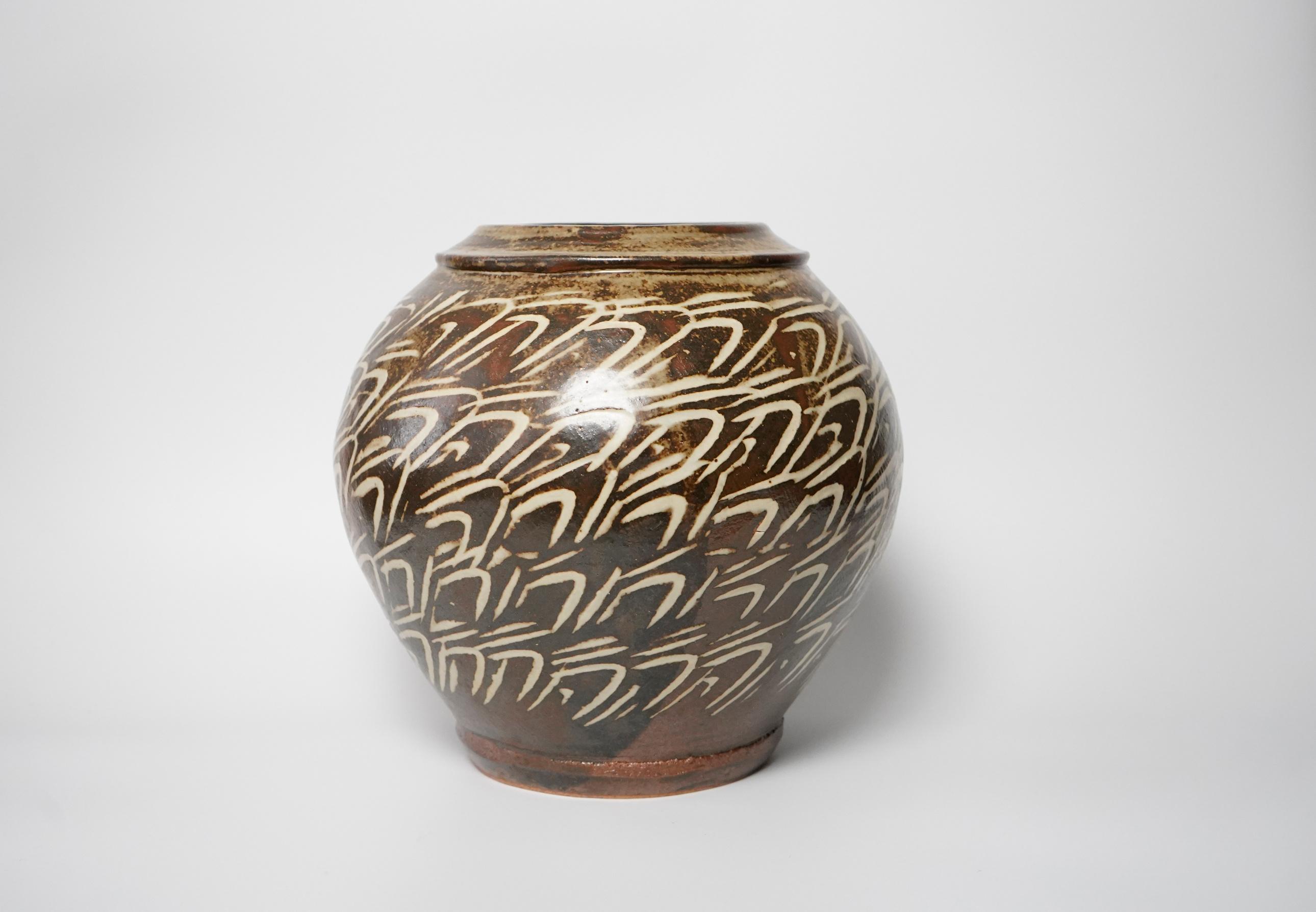
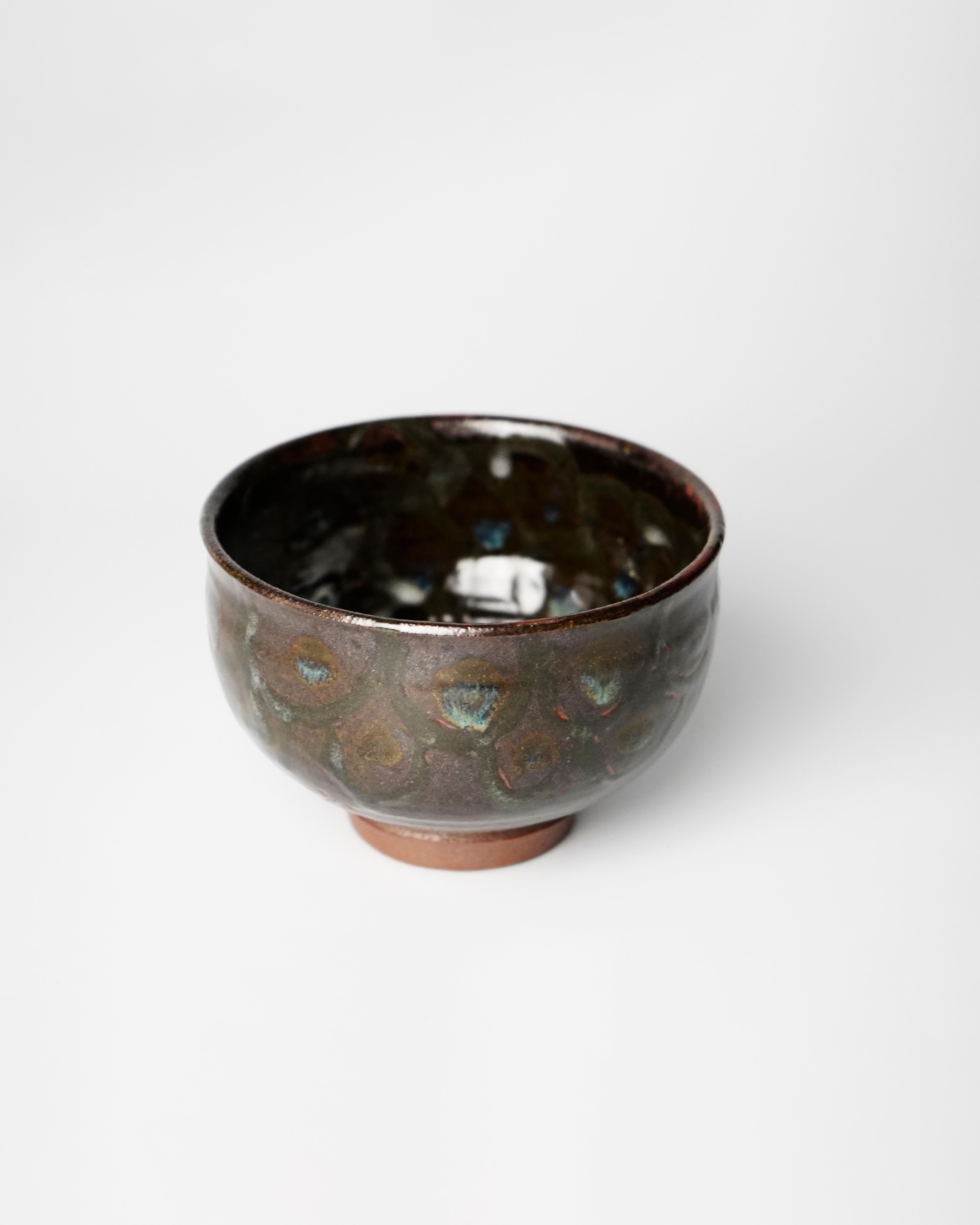
KinjoJirohailsfromOkinawaandwasdesignatedaLivingNationalTreasurein 1985.Bornin1912inNaha,OkinawaPrefecture,Kinjobeganhiscareerin ceramicsattheyoungageof13 Hewasheavilyinfluencedby“Tsuboya-yaki” potterythatoriginatedduringtheRyukyuDynasty.Hebuilthisownclimbingkiln orNoborigamainYomitan,thehomeofOkinawanpottery

Theresultarepictoriallyinclinedlineworkonthesurfacesofhisfunctionaltea waresthatriseinaslightrelieffromathickclaysliponthesurfaceofthe ceramic,creatingacohesivenaturalismthatincorporatesthehandoftheartist

